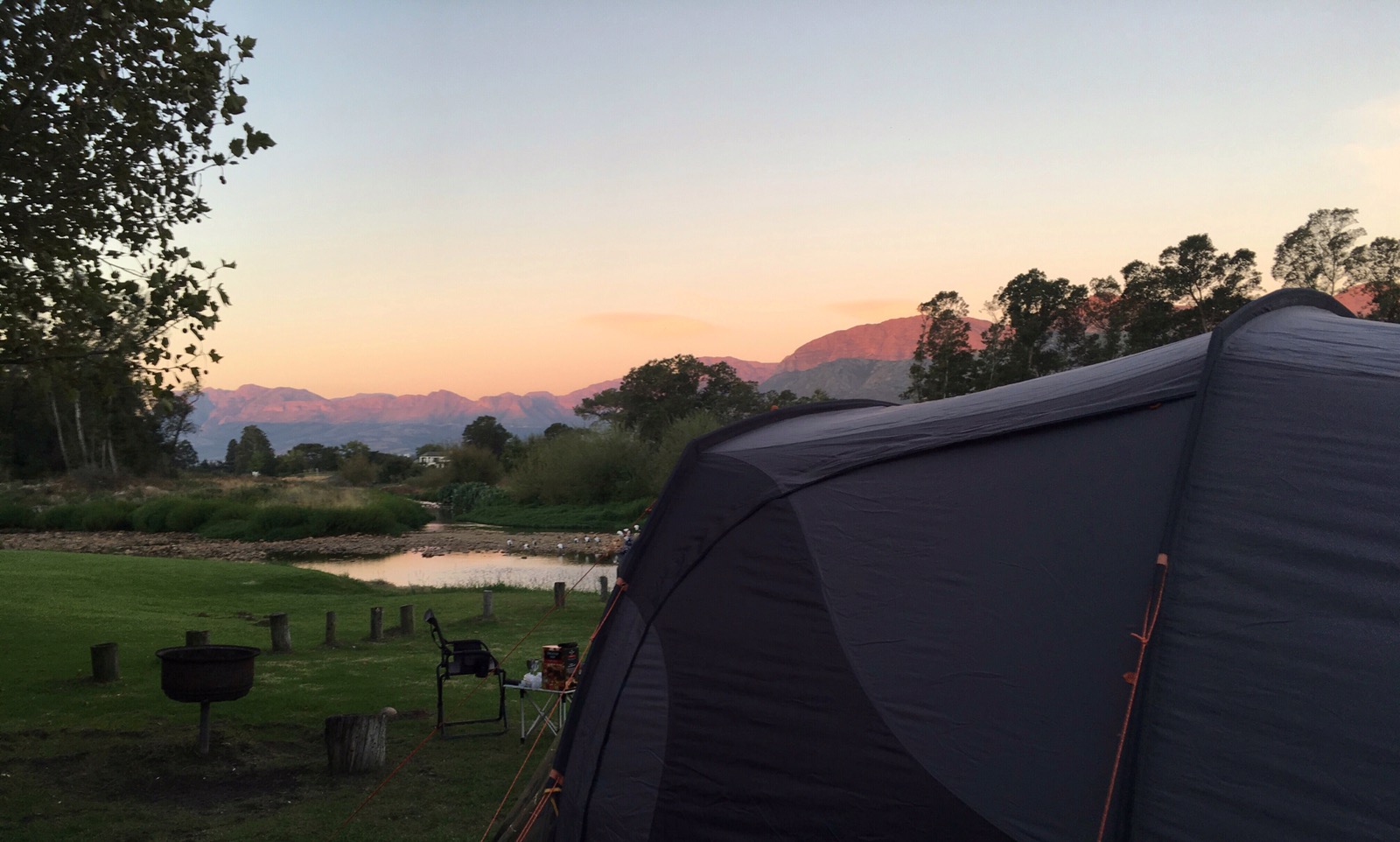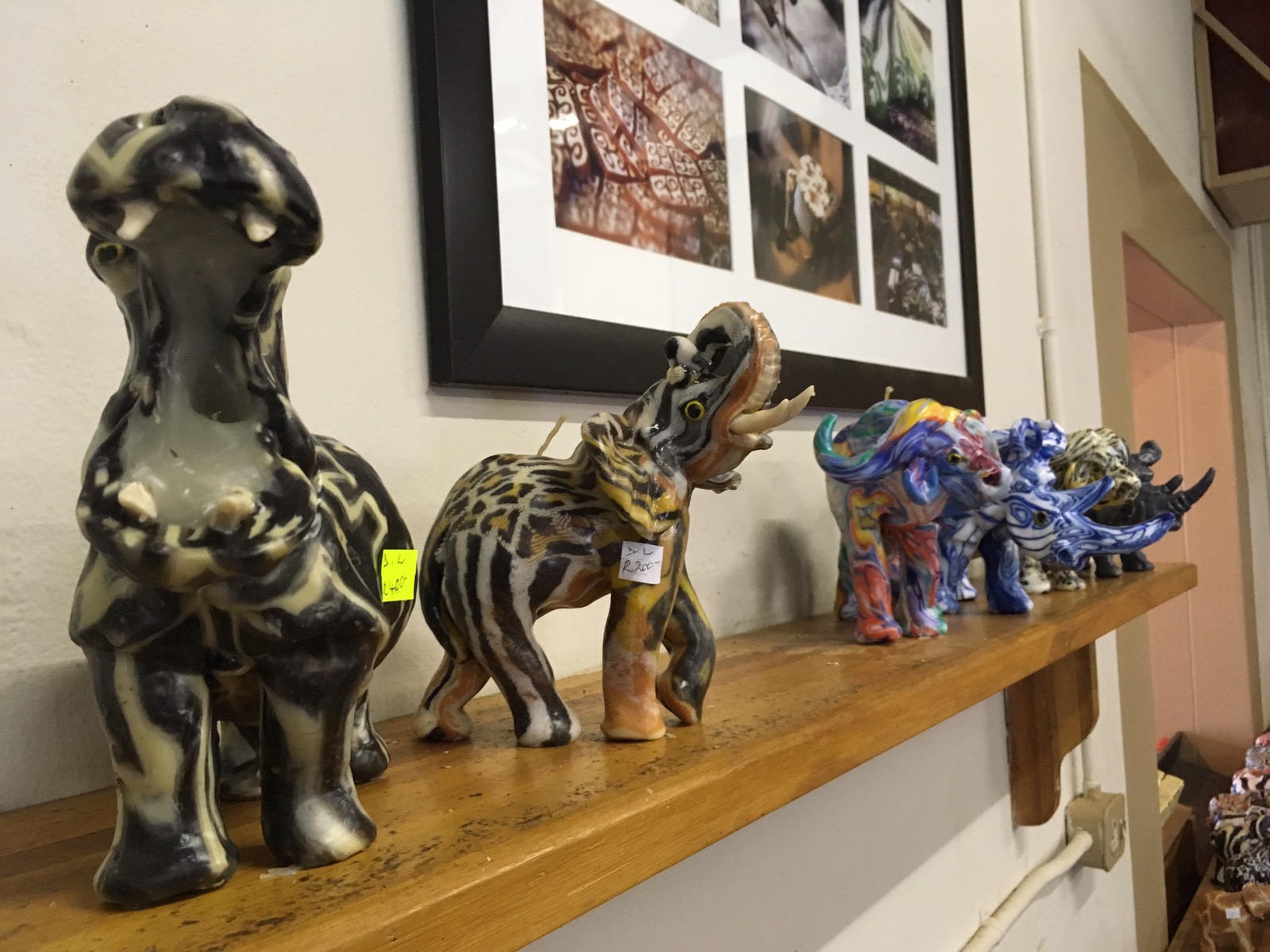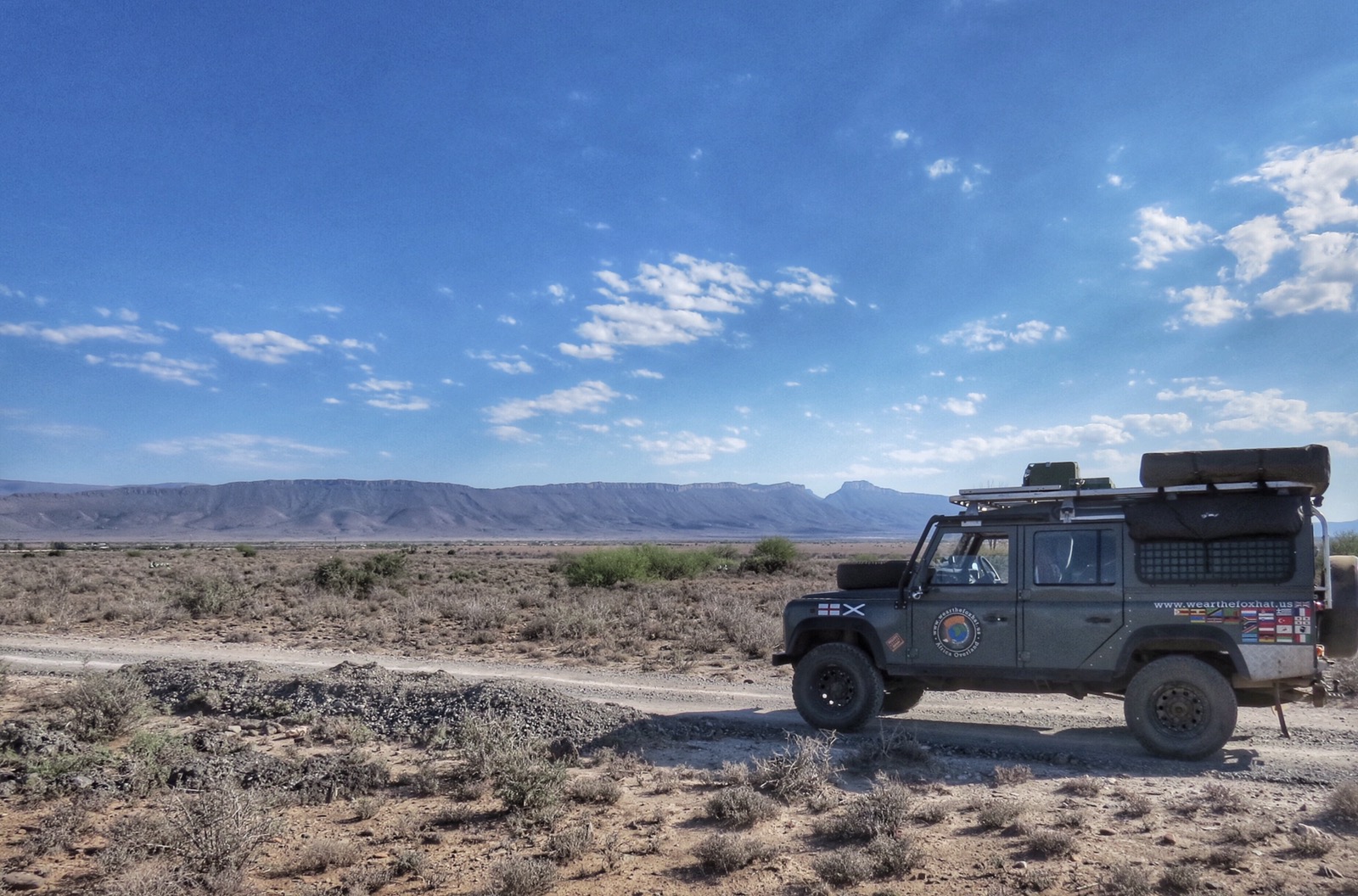Swaziland was a bit of a revelation to us!
I don’t know what we were really expecting but we were quite surprised at how ‘civilised’ the country is. The landscape is mountainous and beautiful – I think we expected that – but there is a measure of prosperity that I didn’t think we’d see: from the number & quality of cars, the absence of shanty towns & people living in grass huts, the excellent condition of the roads and the lack of typical South African ‘tension’ in the air. There is clearly some money around and an atmosphere of well-being, openness and contentedness that is rarely apparent in their South African neighbours.
We spent a very pleasant and relaxed few days at Mlilwane, looking round the traditional beehive huts…
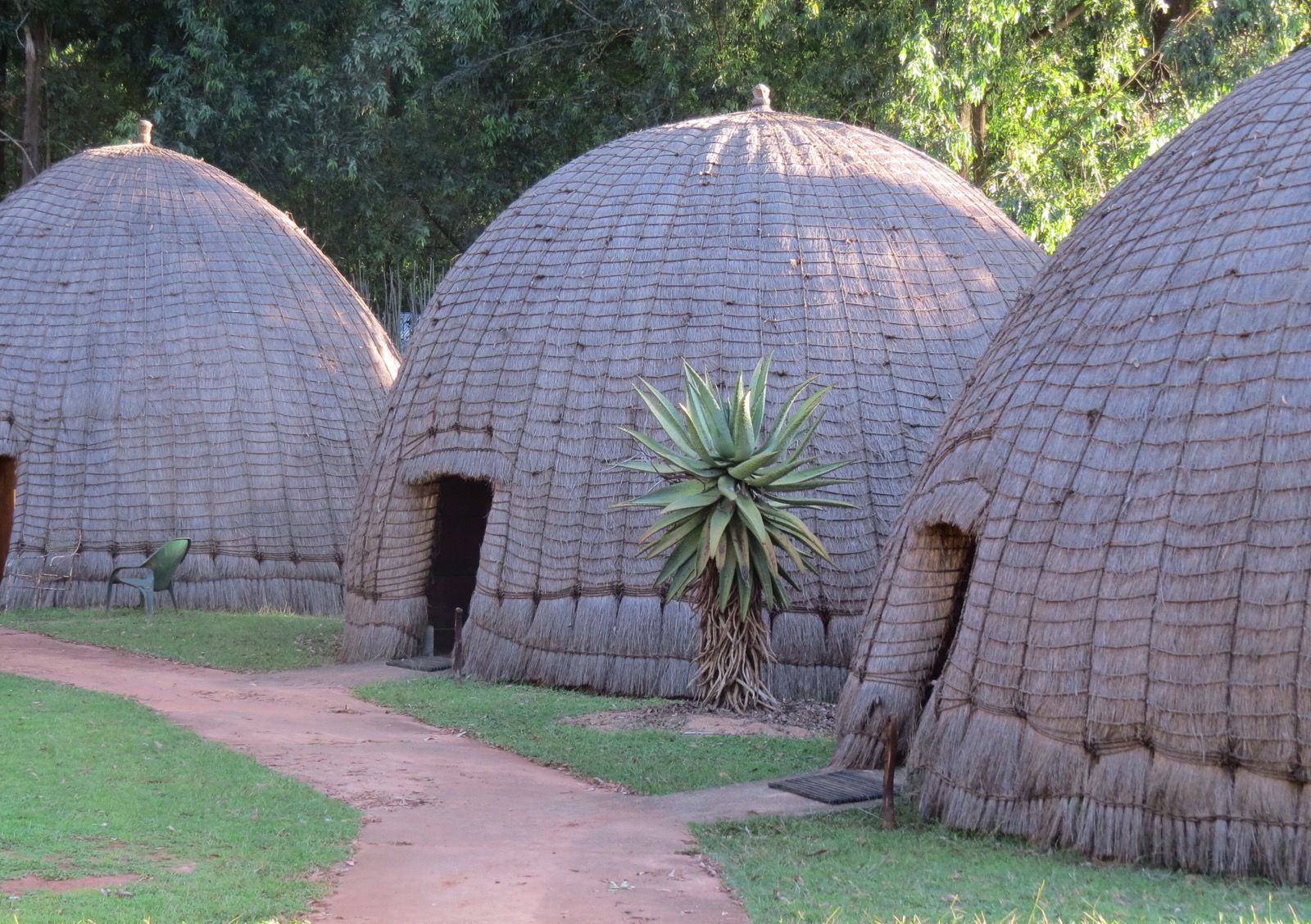
…watching the lake steam after the mid-day thunderstorms…
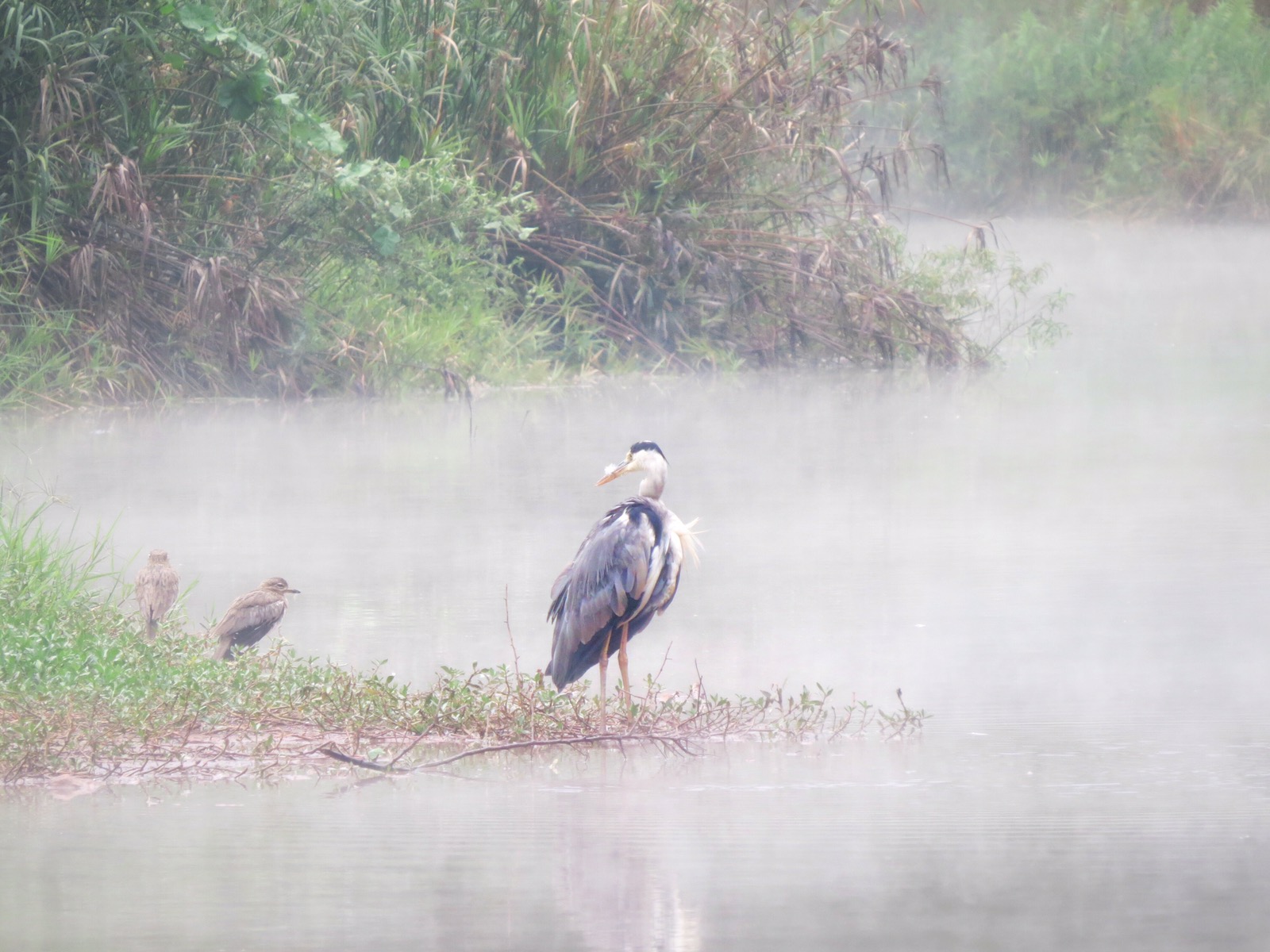
…and chilling around the braai in the evenings.
The camp area is frequently visited by zebra, warthogs, impala, bushbuck and beautiful nyala. The baked potatoes are nearly ready, now all I need to do is find some meat…
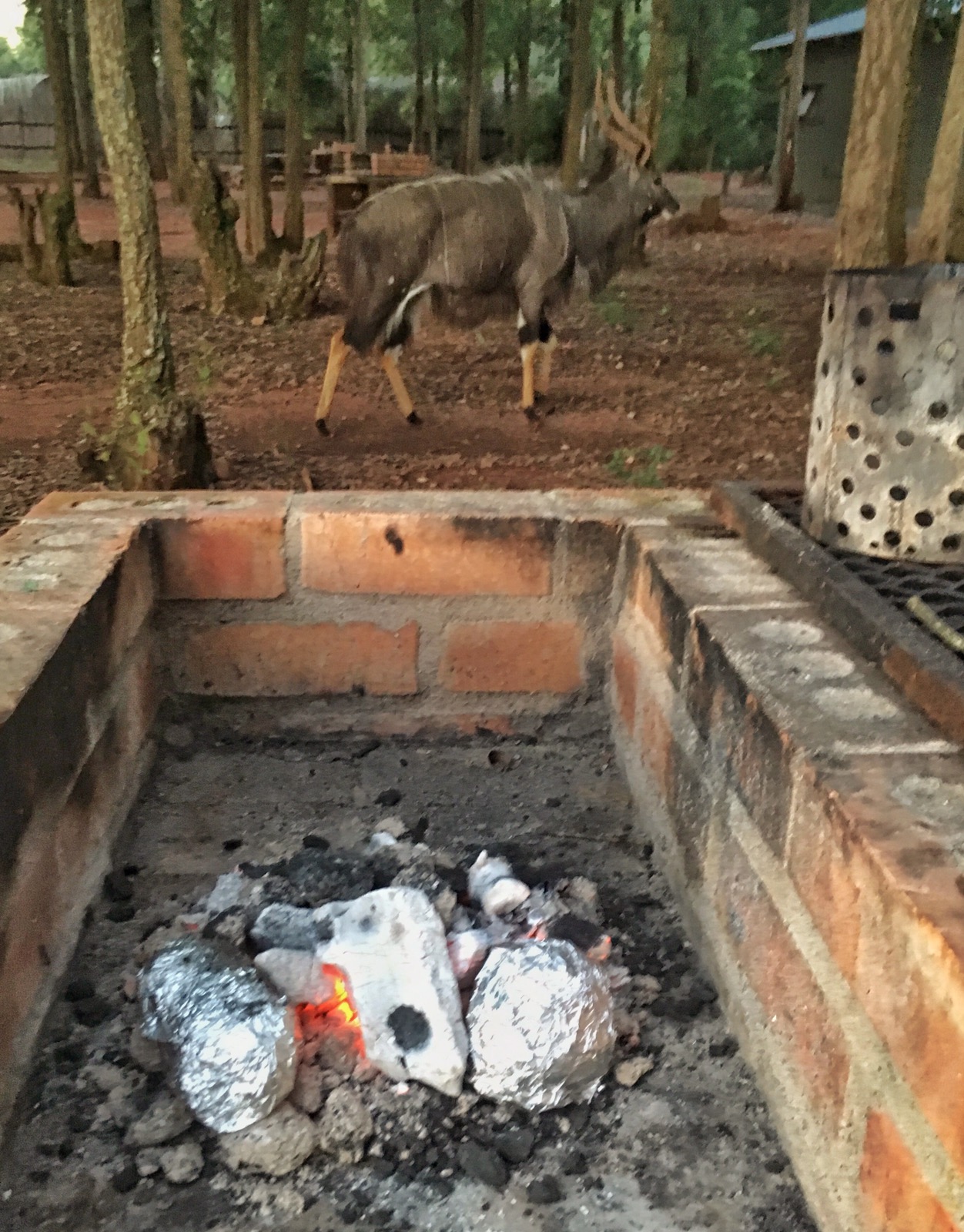
We even went out and did some ‘tourist’ stuff! There’s an excellent little craft market with tremendous batik work, handmade clothing & housewares and a small workshop called Swazi Candles. Everything is made by hand and with tremendous skill. Helene of course, was straight in.
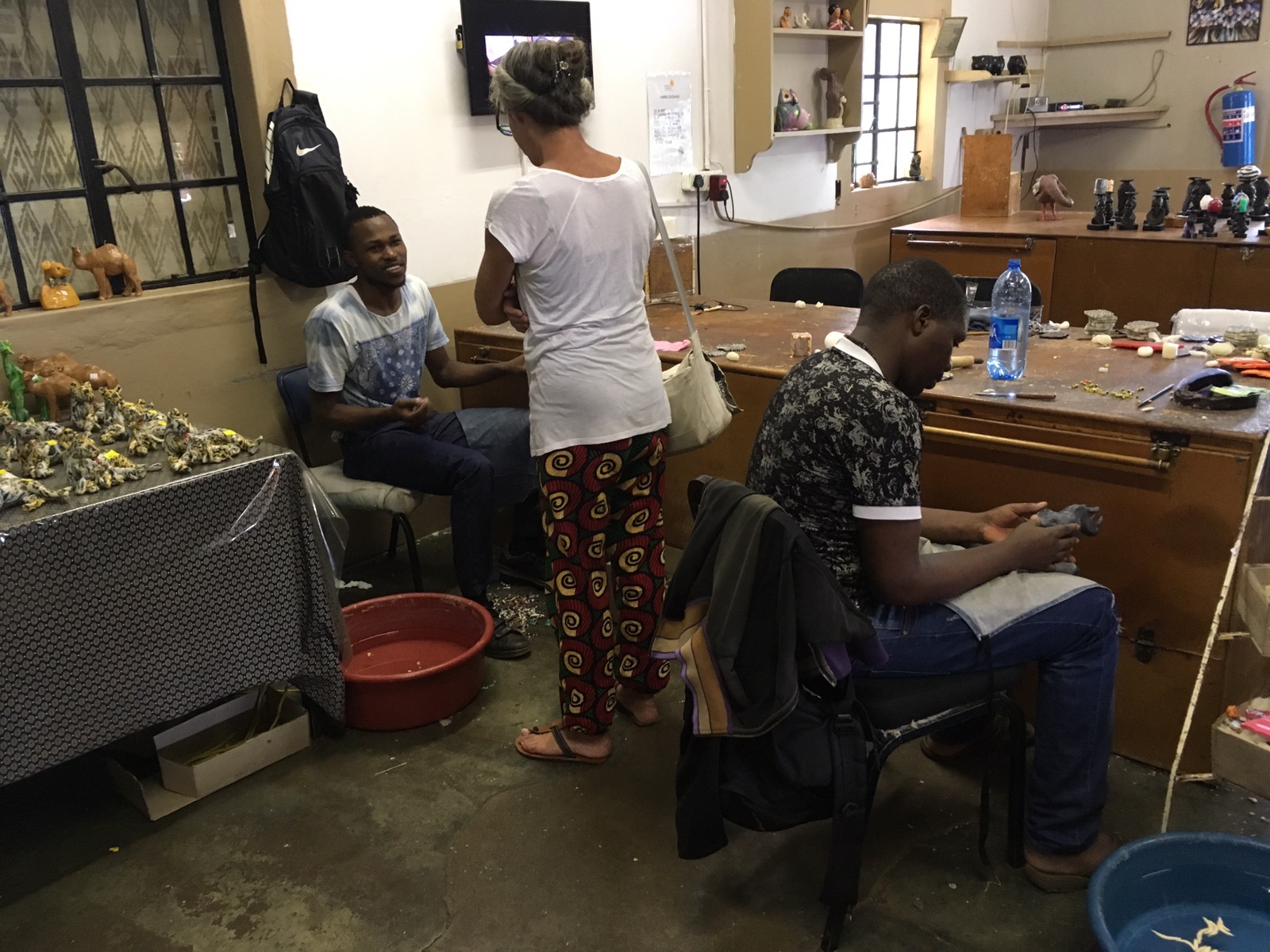
Sheets and balls of wax are kept warm and pliable in a small heated drawer…
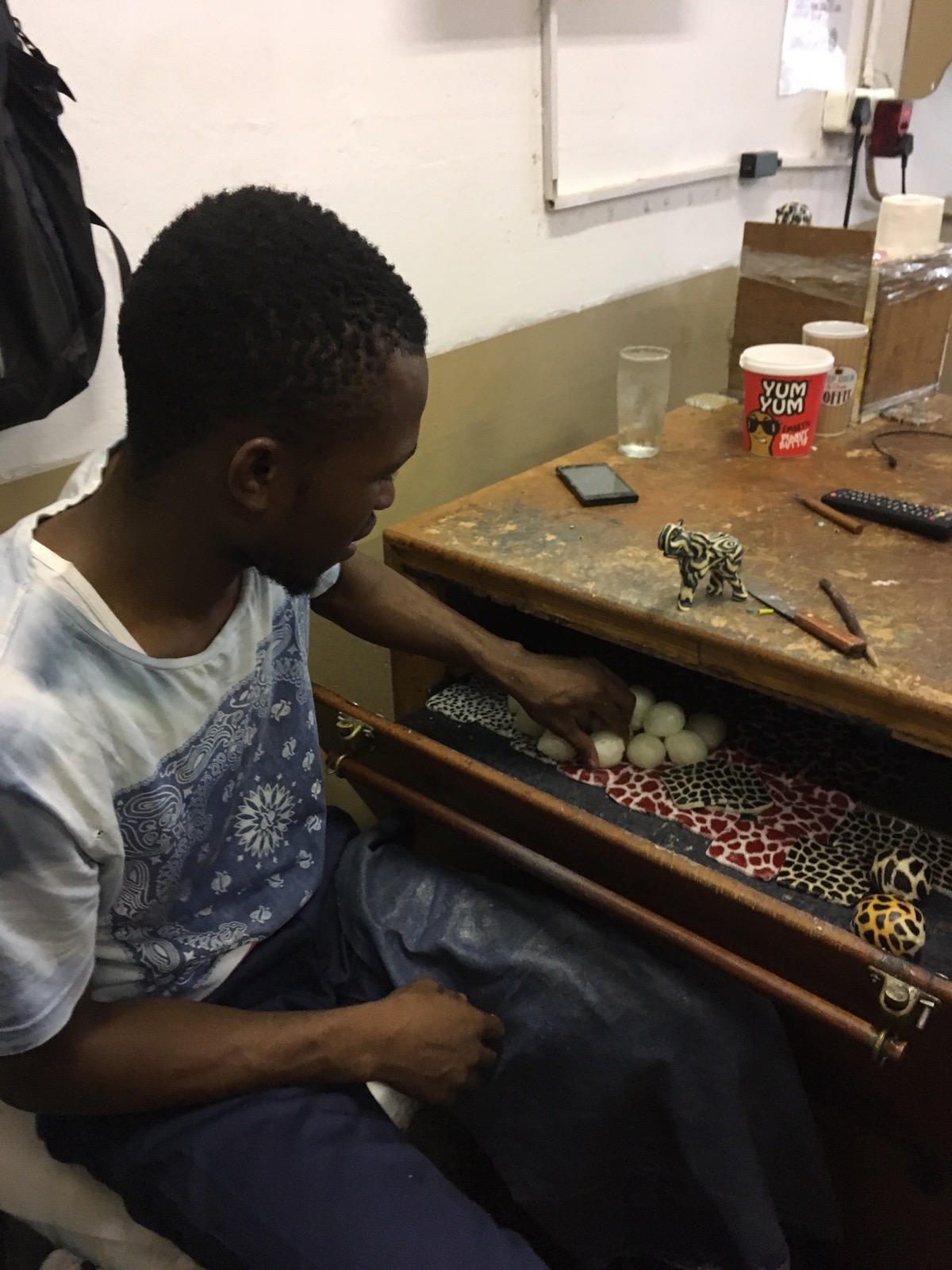
…the coloured and patterned sheets are moulded around the white balls of wax (these will be the burning element with a wick)…
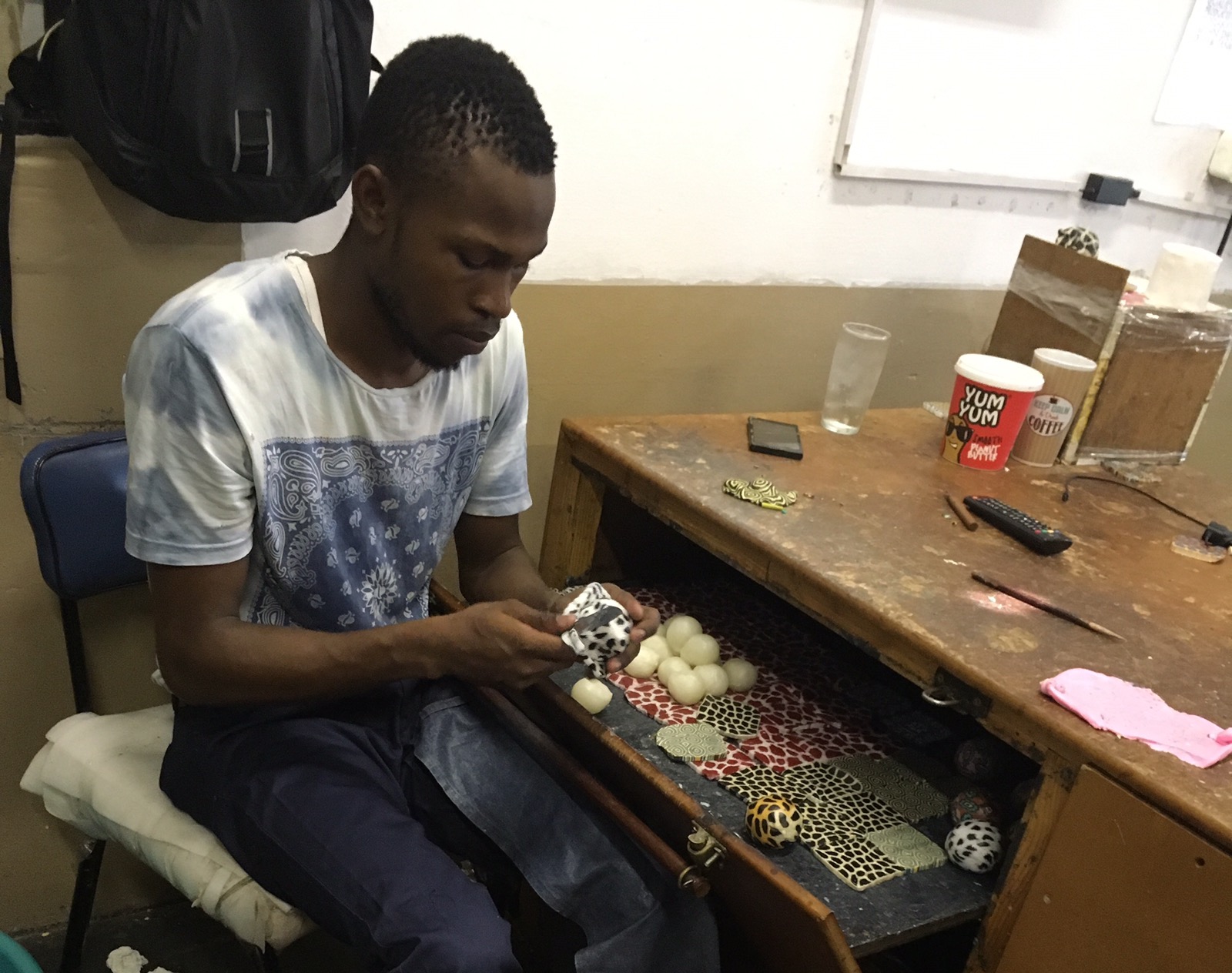
…then the wax is re-warmed before being teased and cut…
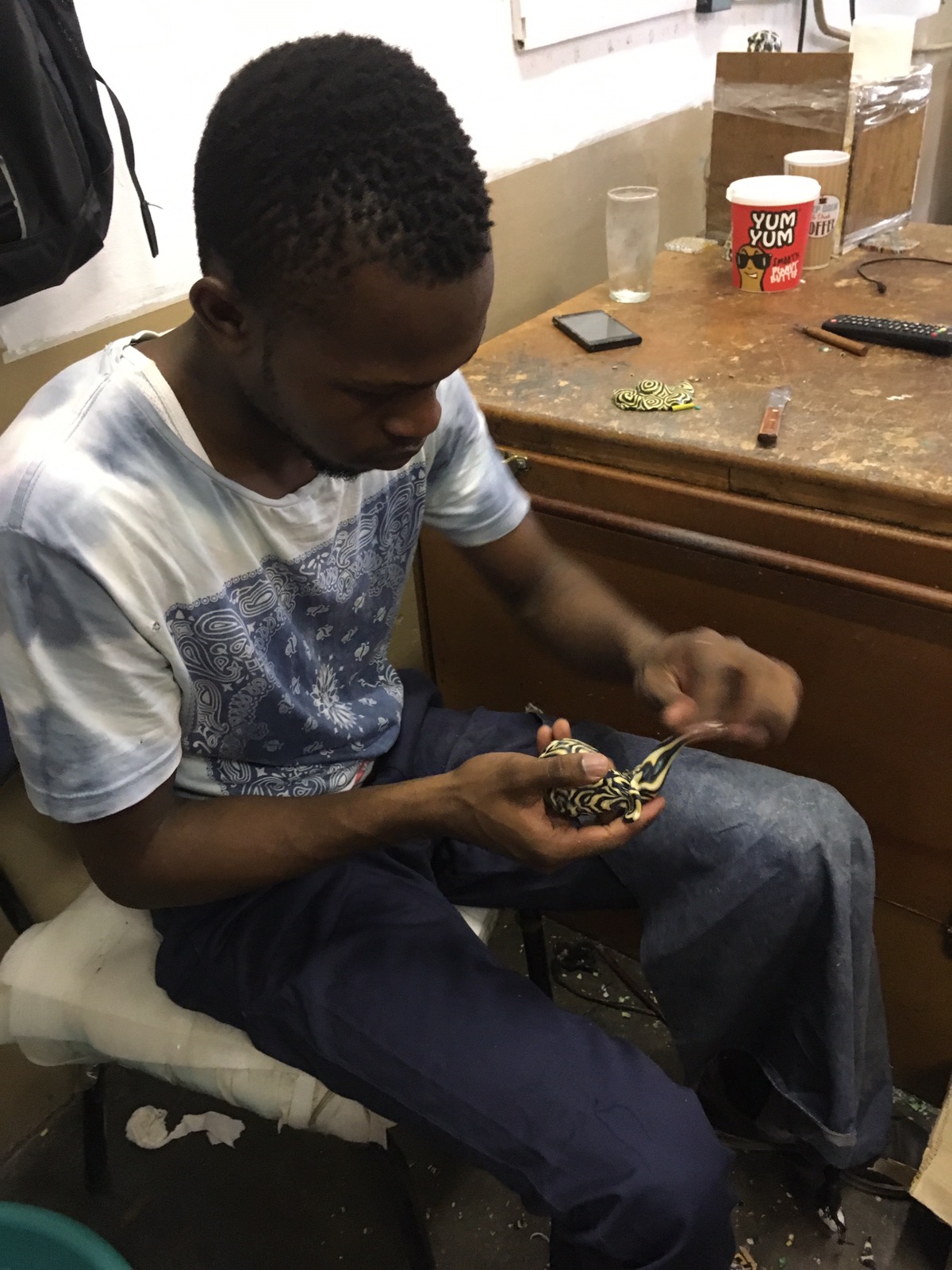
Too soon we had to leave Swaziland and cross back into South Africa (an amazing 11 minutes at the Ngwenya border, no charges or complicated paperwork).
Swaziland is a small Kingdom, but has some pretty long, steep mountain roads. As we left the Kingdom behind us the car temperature gauge was getting very excited and the radiator system was whistling like a kettle. By the third time I stopped to let it cool we had a fountain of scalding steam coming out of a tear in the radiator top hose. After again letting it cool and topping up the water, we limped a hundred kilometres or so at 30kph and eventually found a roadside workshop outside a small village, conveniently opposite a scrapyard.
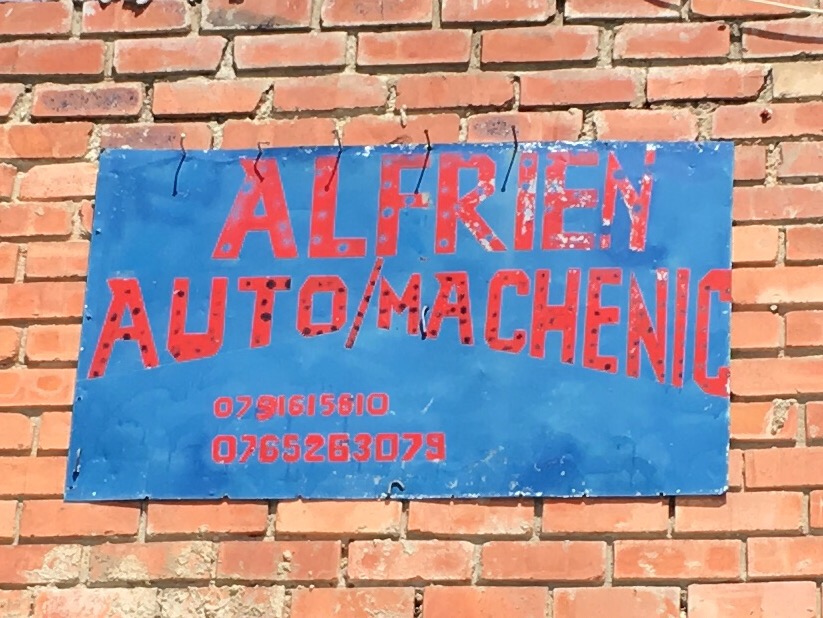
Alfrien didn’t speak a word of English, but he hunted through his piles of scrap until he found a piece of hose that he could cut to roughly the right shape and had it on the car in no time.
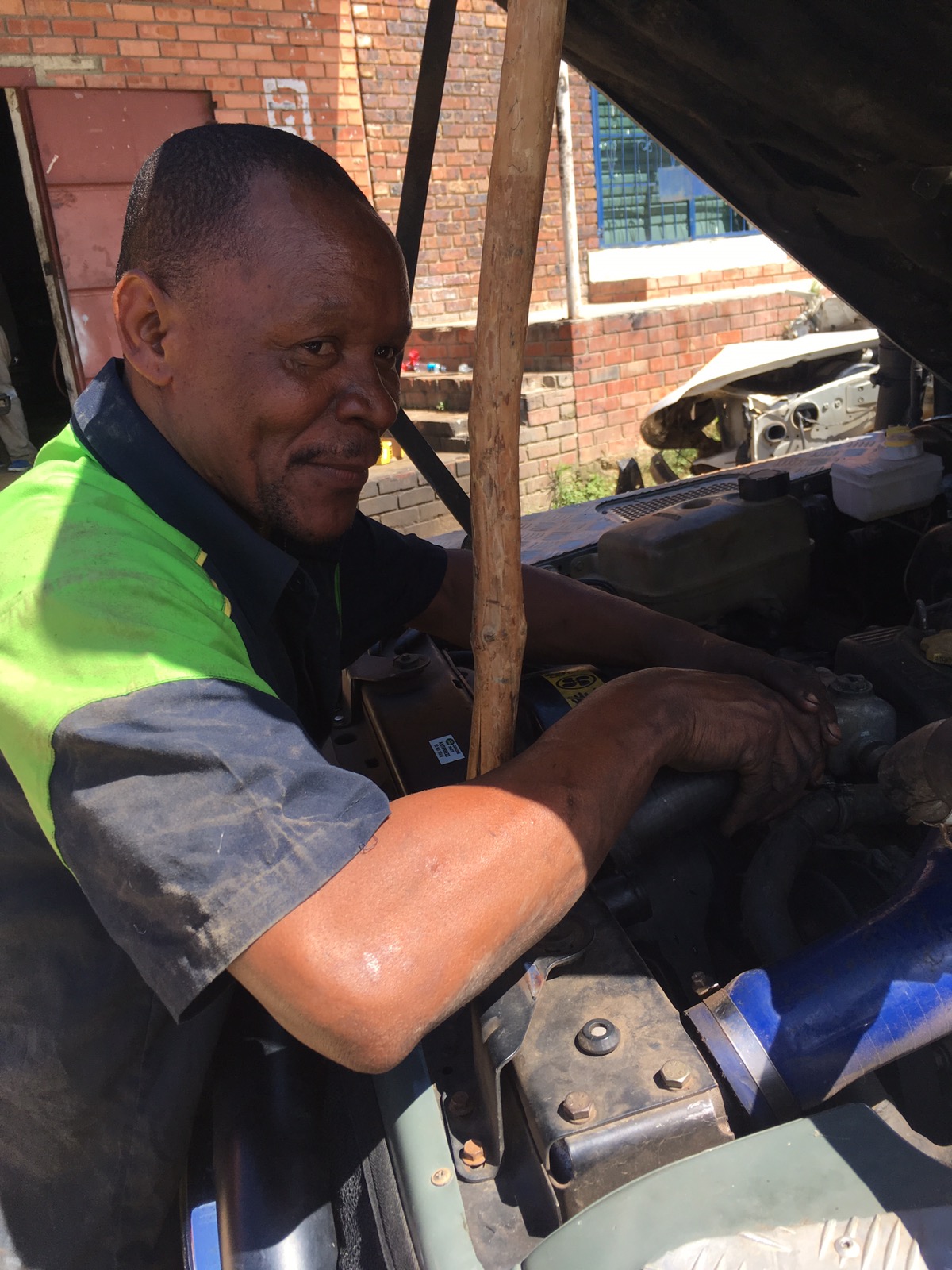
Total labour and parts $3.
Unfortunately, although it stopped the leak it didn’t solve our overheating problem and, after a couple of whatsap conversations with Nick Selby back at Foleys Zambia he narrowed it down to a couple of possible causes. At the next village we stripped out the thermostat (clearly it had been stuck closed) and the engine has run sweet as a nut since.
Our travel plan was to take a circuitous route via Mpumalanga Province to Johannesburg and then through Free State to the Karoo wilderness areas of Western Cape Province, and finally down to Cape Town where we were due to collect Judith (a friend from the UK) who would be visiting us in 3 weeks time.
As always, we travel slowly, preferring to drive no more than 2-300km per day and to stay wherever we stop for a minimum of 2 (ideally 3-4) nights. Since we had 3 weeks to cover 1,800km our laziness knew no bounds.
We spent a few days at Jonkers Dam, a fishing lake in farming country outside Standerton. Owners Hannes and Beyanka made us very welcome (wouldn’t let us pay for dinner when we couldn’t be bothered cooking and told us that “if money is a bit tight, you’re welcome to stay as long as you like without charge.“)
Very tempting: although the landscape around here is very flat, the sky’s are huge, the star-scapes are stunning and the sunset View From The Penthouse is not too shabby:

Even on the occasional cloudy night (when there’s no cloud it was bitterly cold at night) the moon painted beautiful, subtle colours as it backlit the night sky.
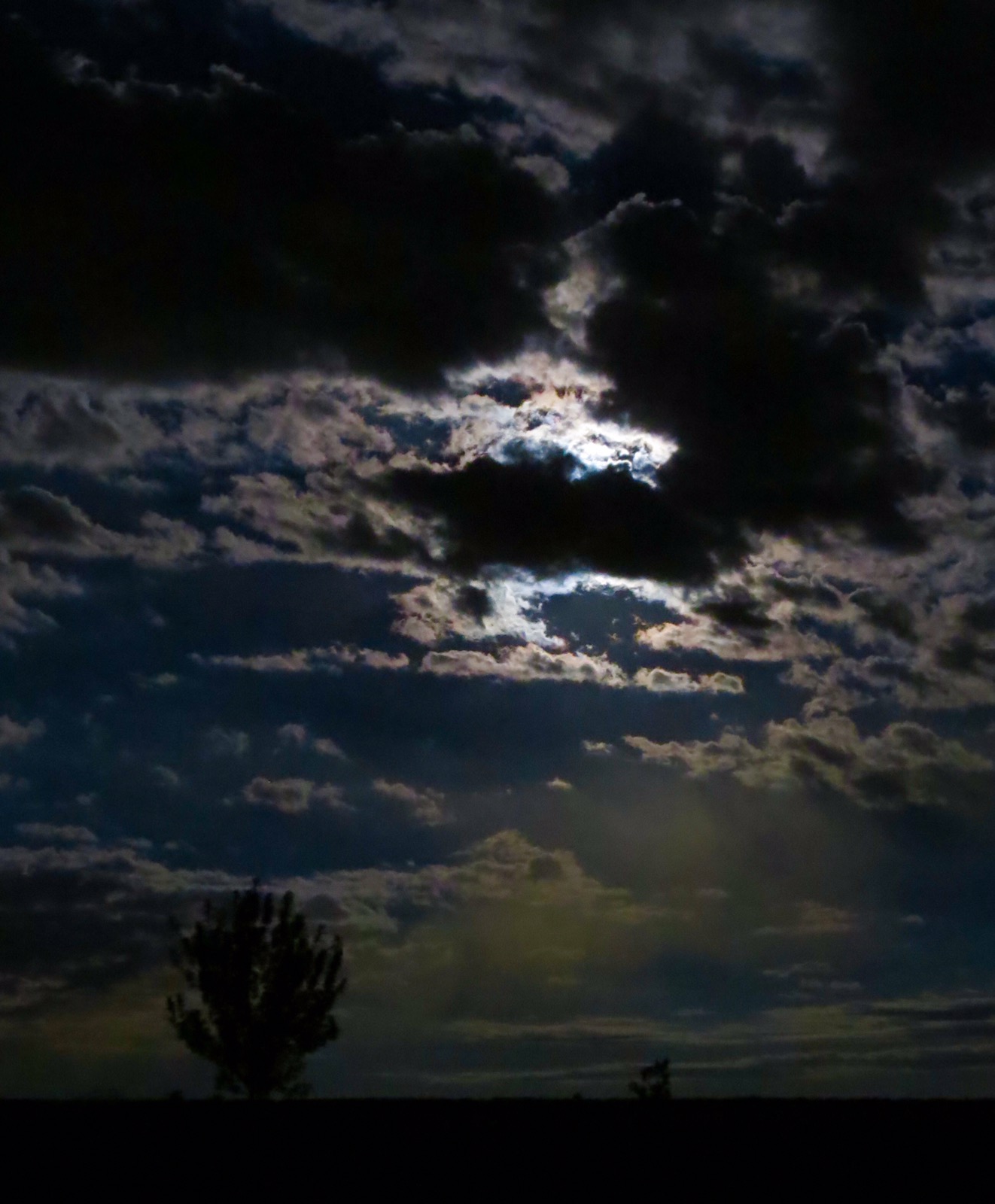
After a couple of days we raced up to Jo’burg to collect some supplies (appalling place, I couldn’t wait to get away from it as fast as possible) and headed south west out into the Karoo wilderness.
We made a couple of quick stops at Gariep Dam (where the twilight painted the landscape in shades of oyster and violet)…
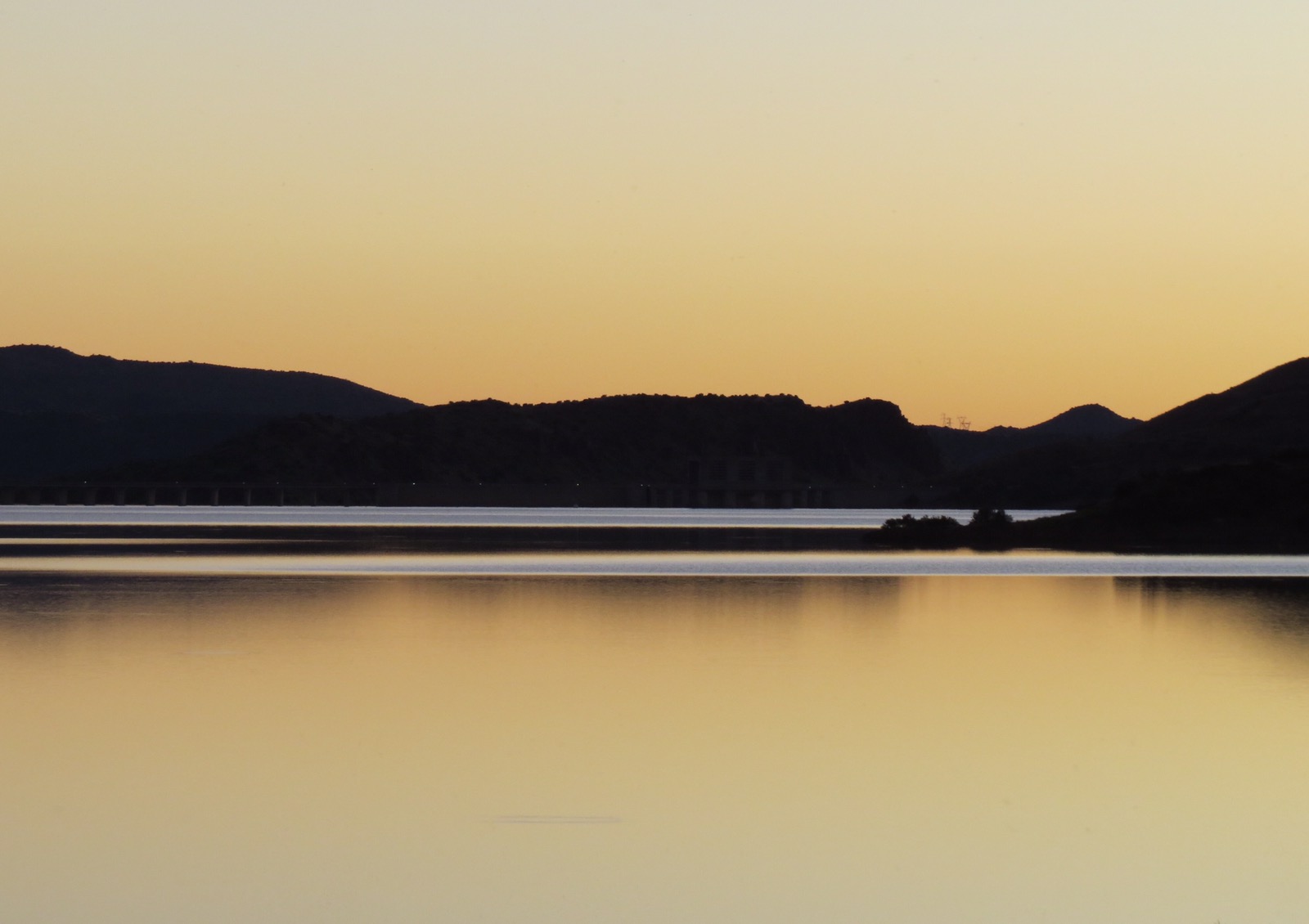
…and we spent a couple of days reading and watching the Yellow Mongooses (Mongeese?)
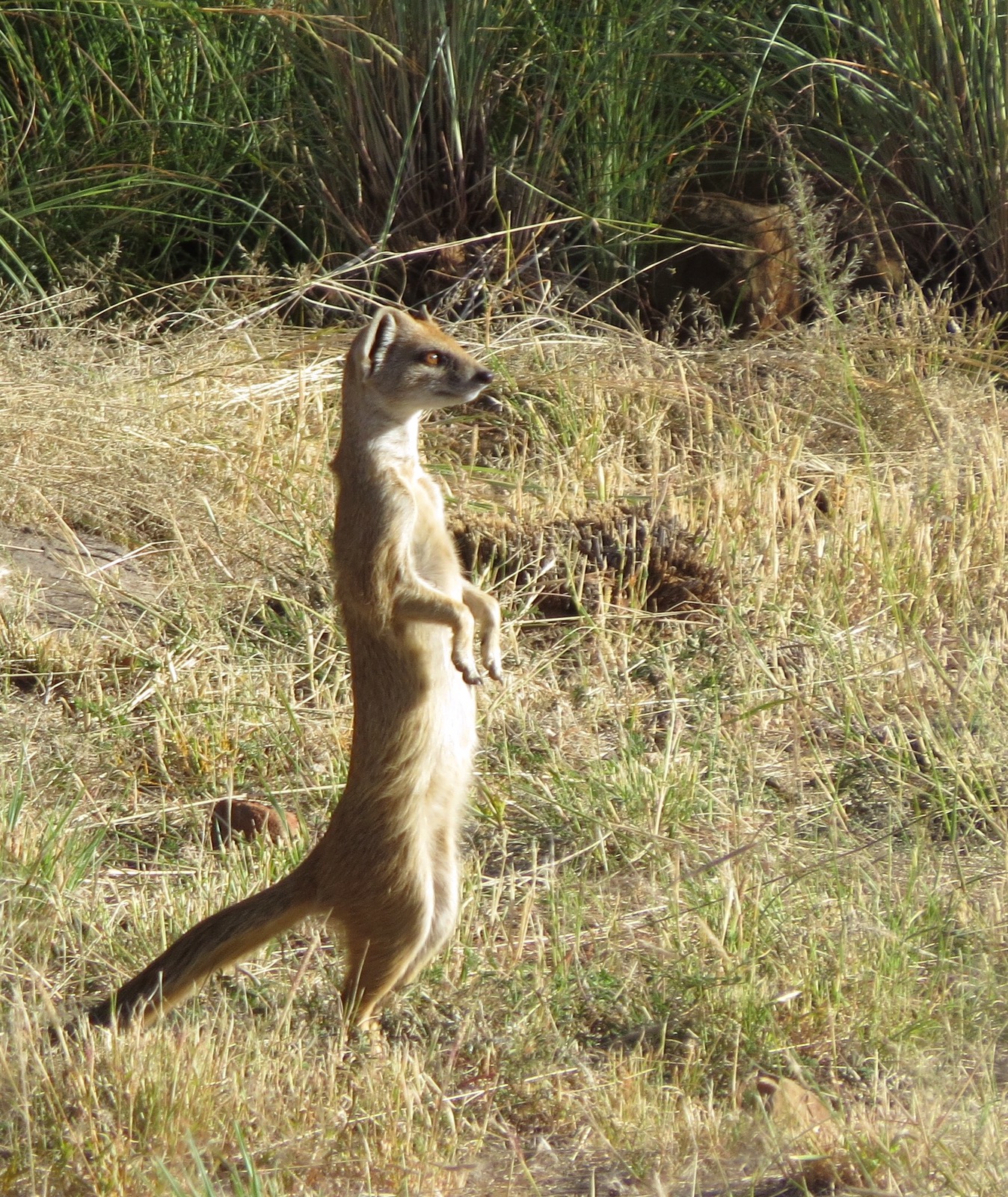
The landscape here is huge, bleak and empty. Roads are deserted, tracks are long, dusty ribbons of gravel.
It’s sobering to think that the Voortrekkers and gold miners headed out into this wilderness only 150 years ago on wooden wheeled carts pulled by oxen, with no concept of what they’d find, where they’d collect water, or where their next meal (other than salted biltong) would come from in the years to come.
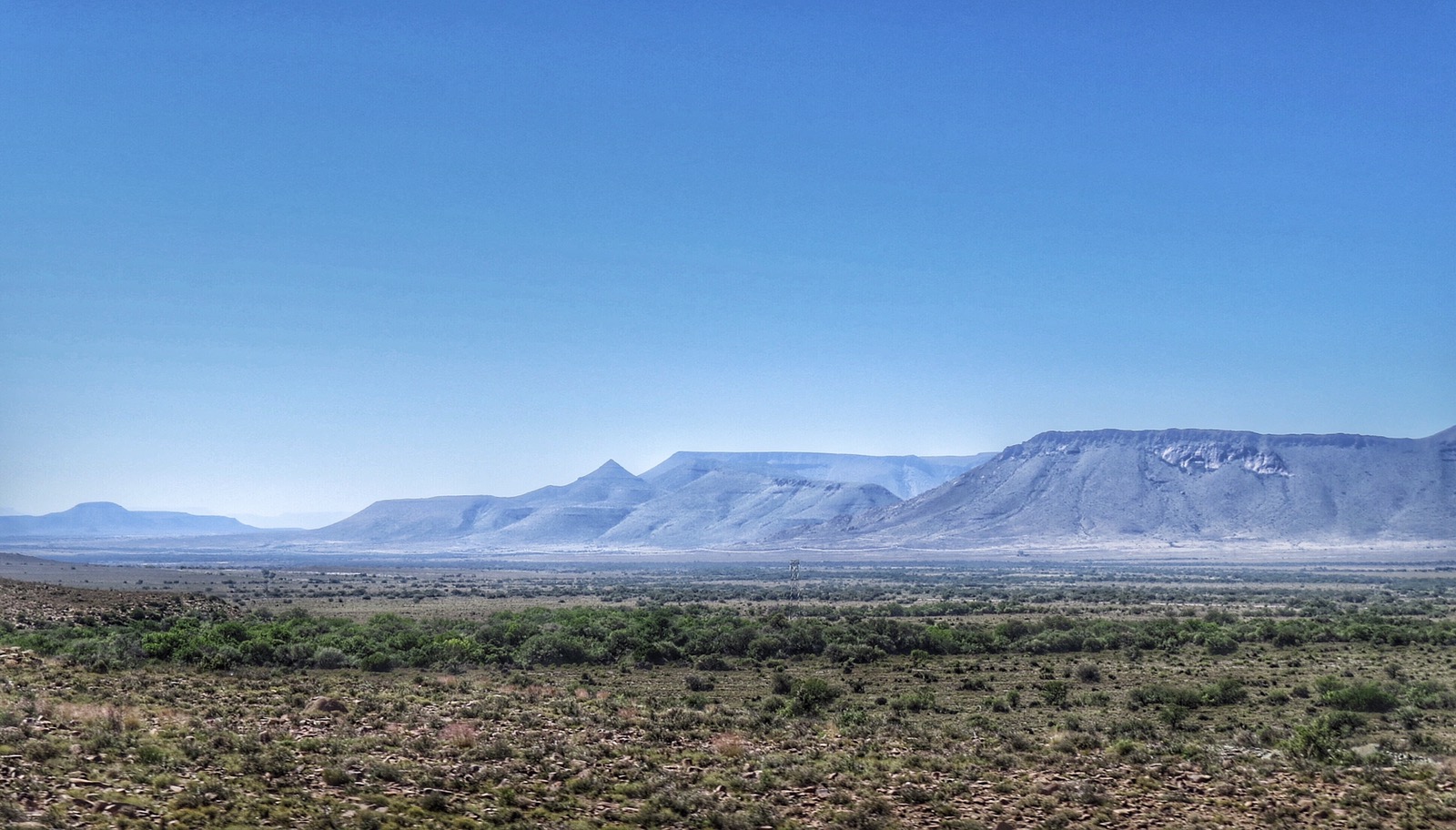
Certainly these days there’s very little game around. We had a couple of buck visit us in camp…
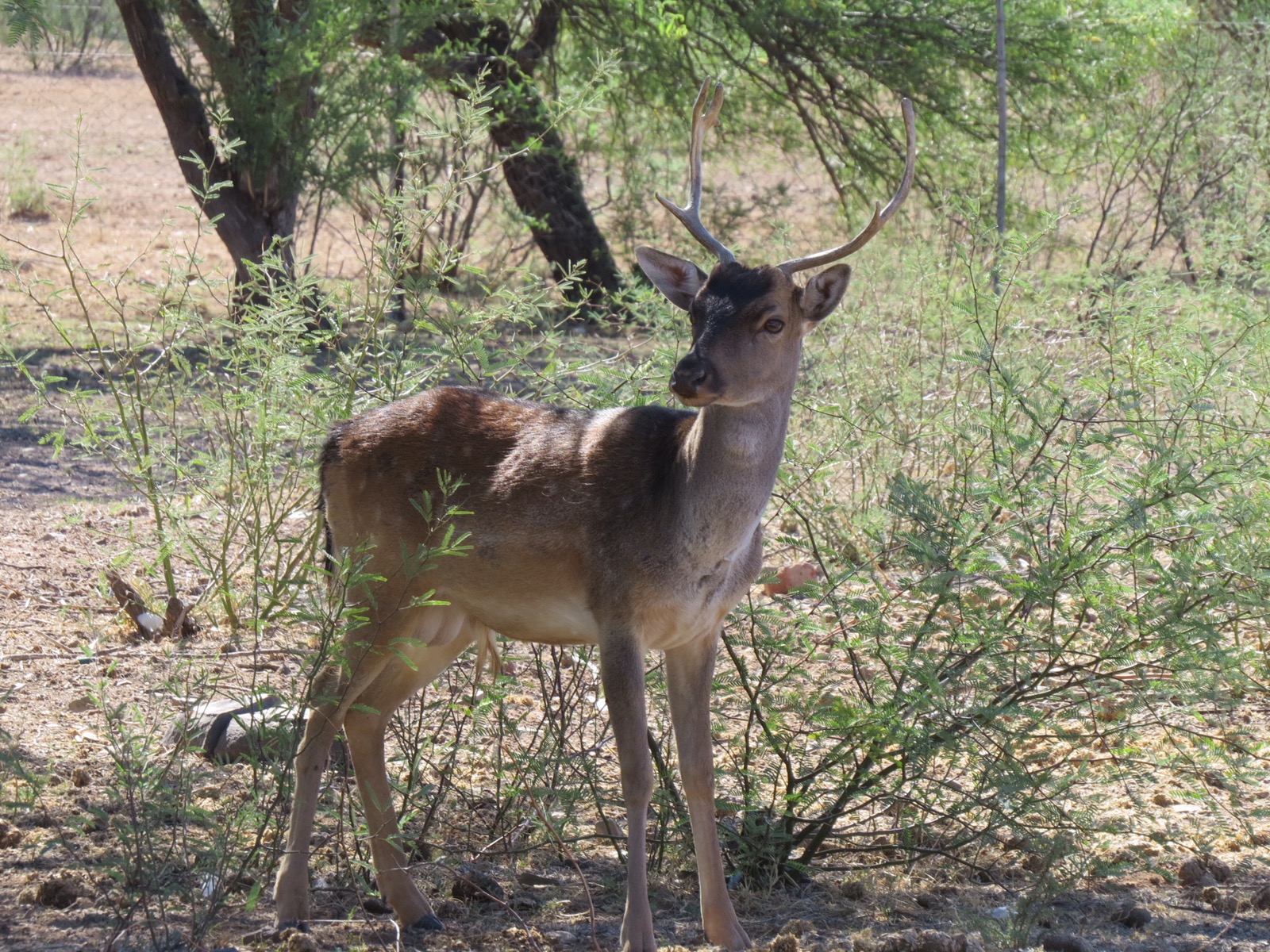
…and almost tripped over what (until it hissed at us) originally appeared to be a particularly inconvenient doorstop.
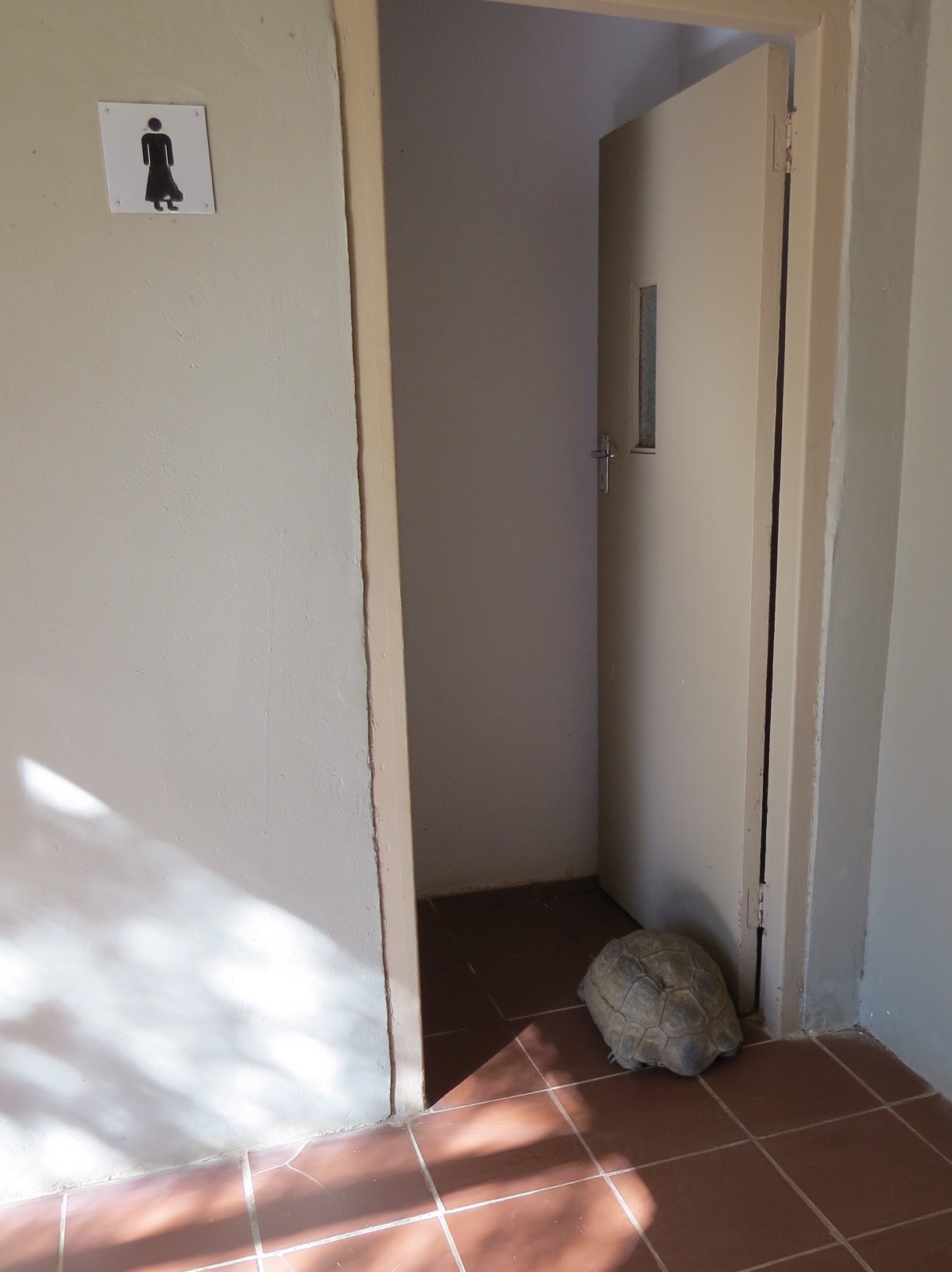
Our intention was to head into the Karoo Wilderness National Park for a few days. We nipped into the closest town to restock provisions and as we pulled out of Beaufort West the car juddered and and stopped with a loud jarring, grinding sound.
The rear half-shaft had been spat out of the differential. Oh joy!
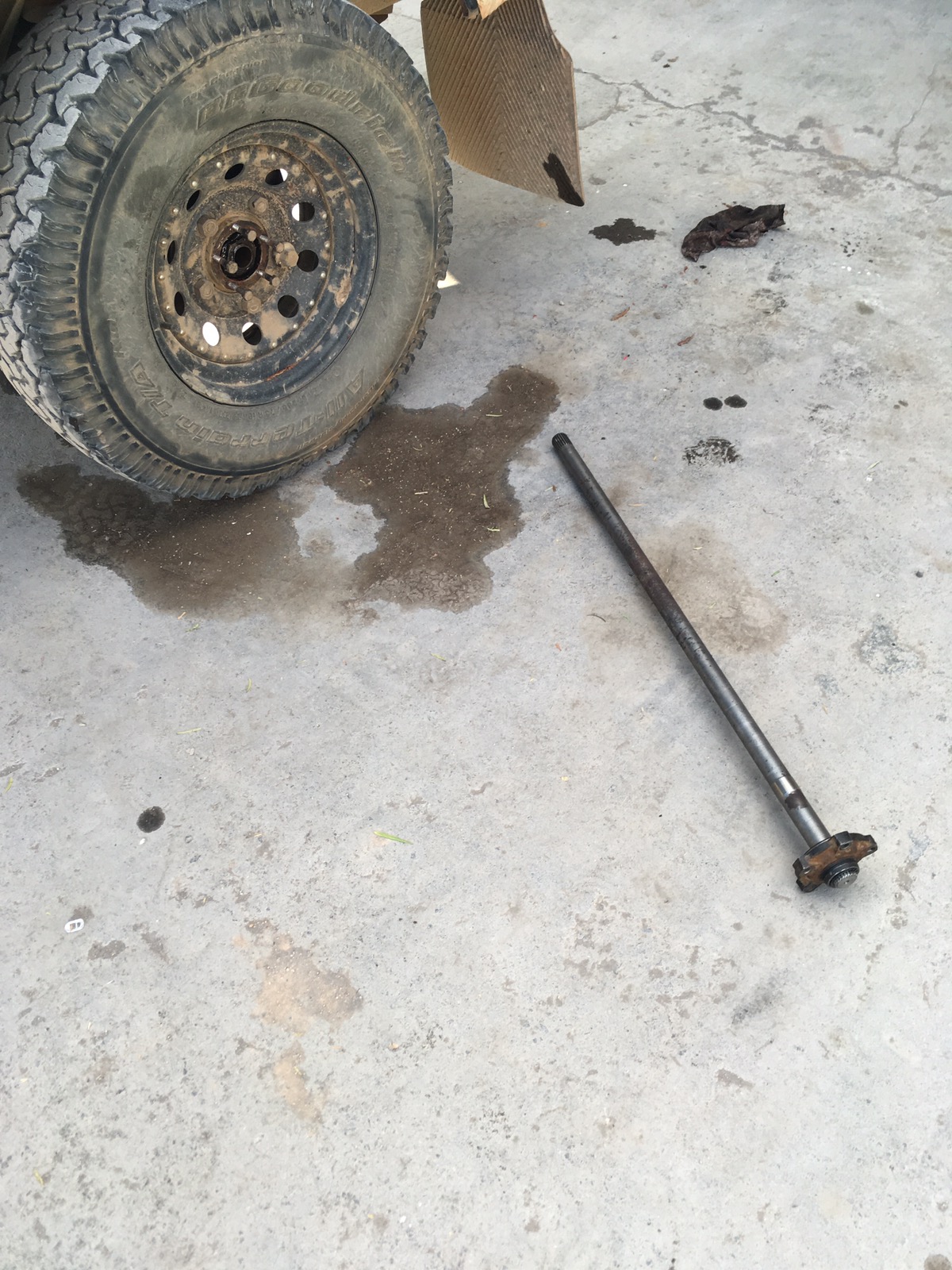
Still, at least we weren’t in the middle of the Karoo wilderness!
I managed to get the car moving with the diff-lock engaged and we limped round the corner to a small workshop we’d seen earlier in the day.
It was the day before a Public Holiday weekend, everyone was working fast to get through the backlog of vehicles and knock-off early. But the guys set to work on the axel. They identified that it wasn’t too damaged but that, although there was a circlip on the outside of the hub, there wasn’t one on the inside (which would prevent it from slipping out over time).
They talked about welding the shaft to the hub, but I wasn’t too keen on that idea. Eventually they found a machine shop at the other end of town who actually cut a perfect groove into the half shaft, behind the hub and fitted an internal circlip so that once bolted back onto the axel, the shaft couldn’t slip in any direction. It took them all day, but once again local experts proved they could find a way to build a work-around.
Before the sun set, we got through the gates to the Karoo National Park, drove the 11km track to our designated campsite and settled down to a glass of something cold.
View From The Penthouse:
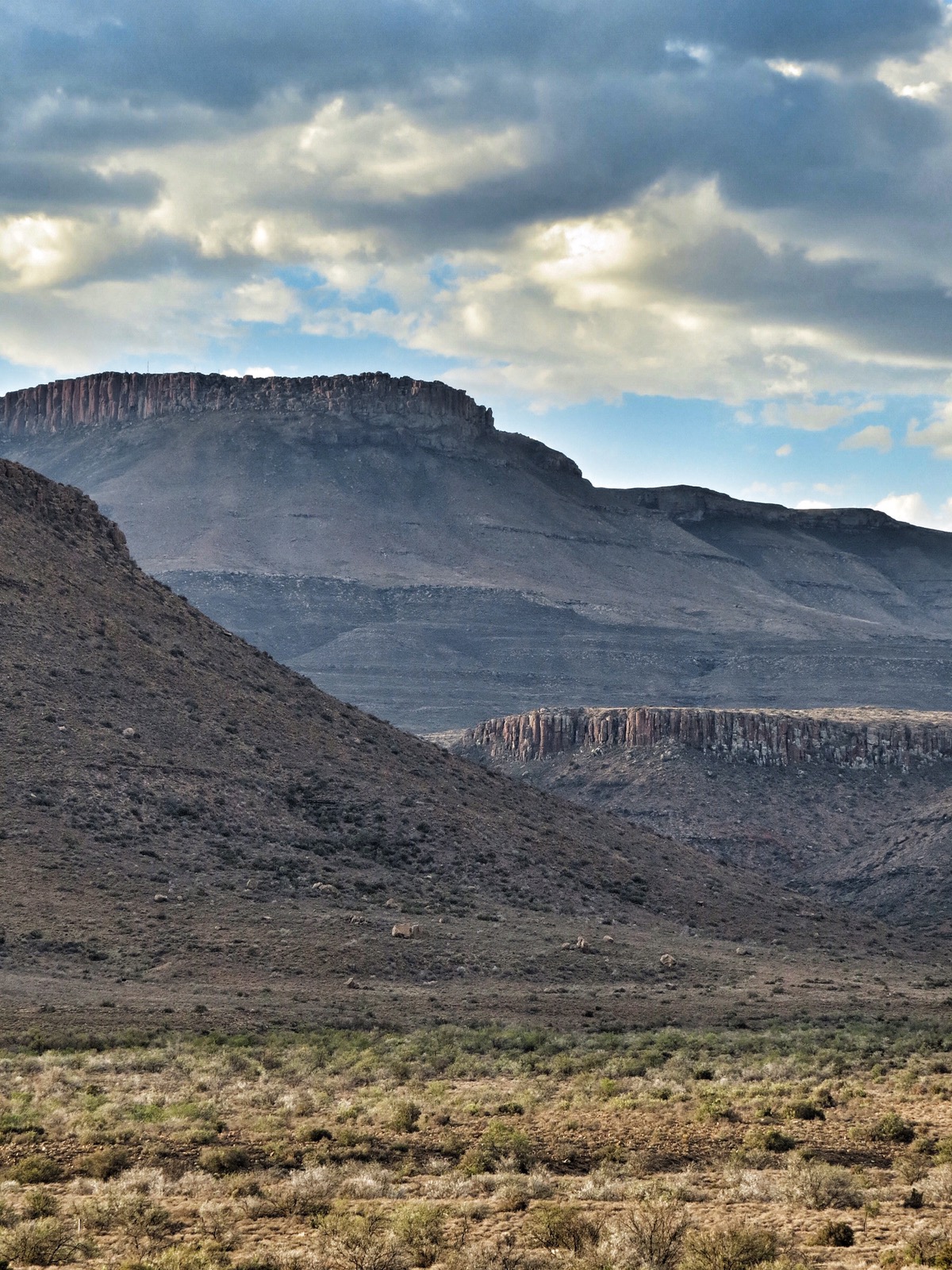
Karoo is not a National Park stocked with game like a Downton Abbey larder just before Christmas. There are a few lion and herds of buck, but they’re very elusive.
The Mountain Zebra are beautiful and rare…
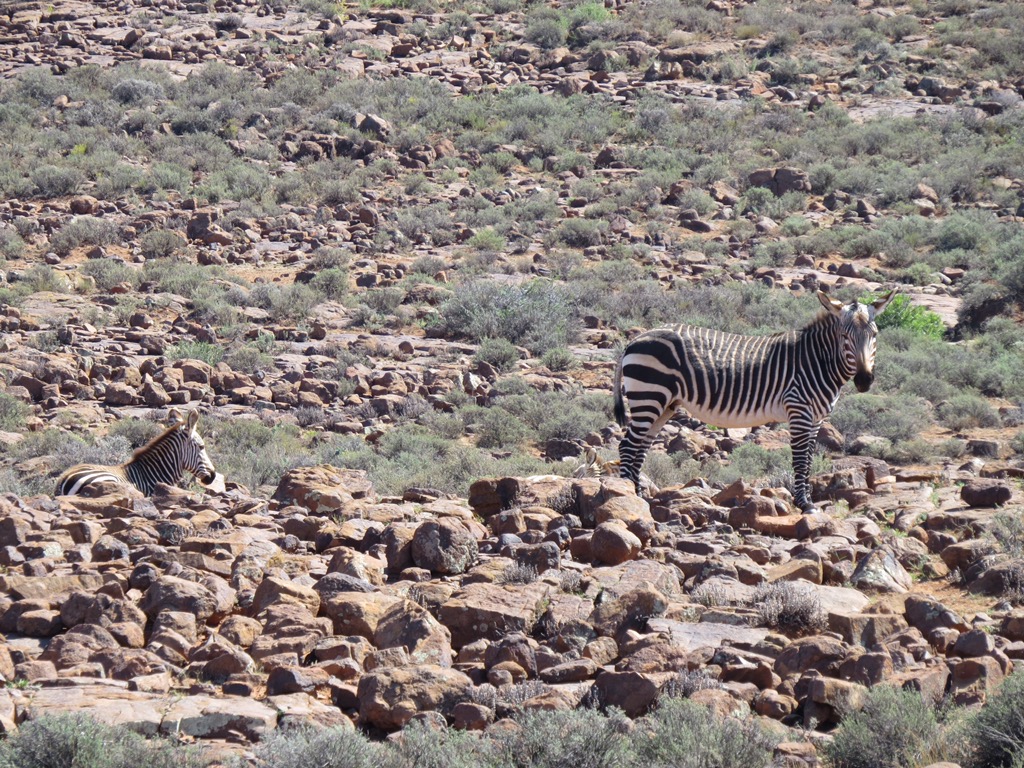
…and occasionally the big kudu will break cover for a surreptitious drink…
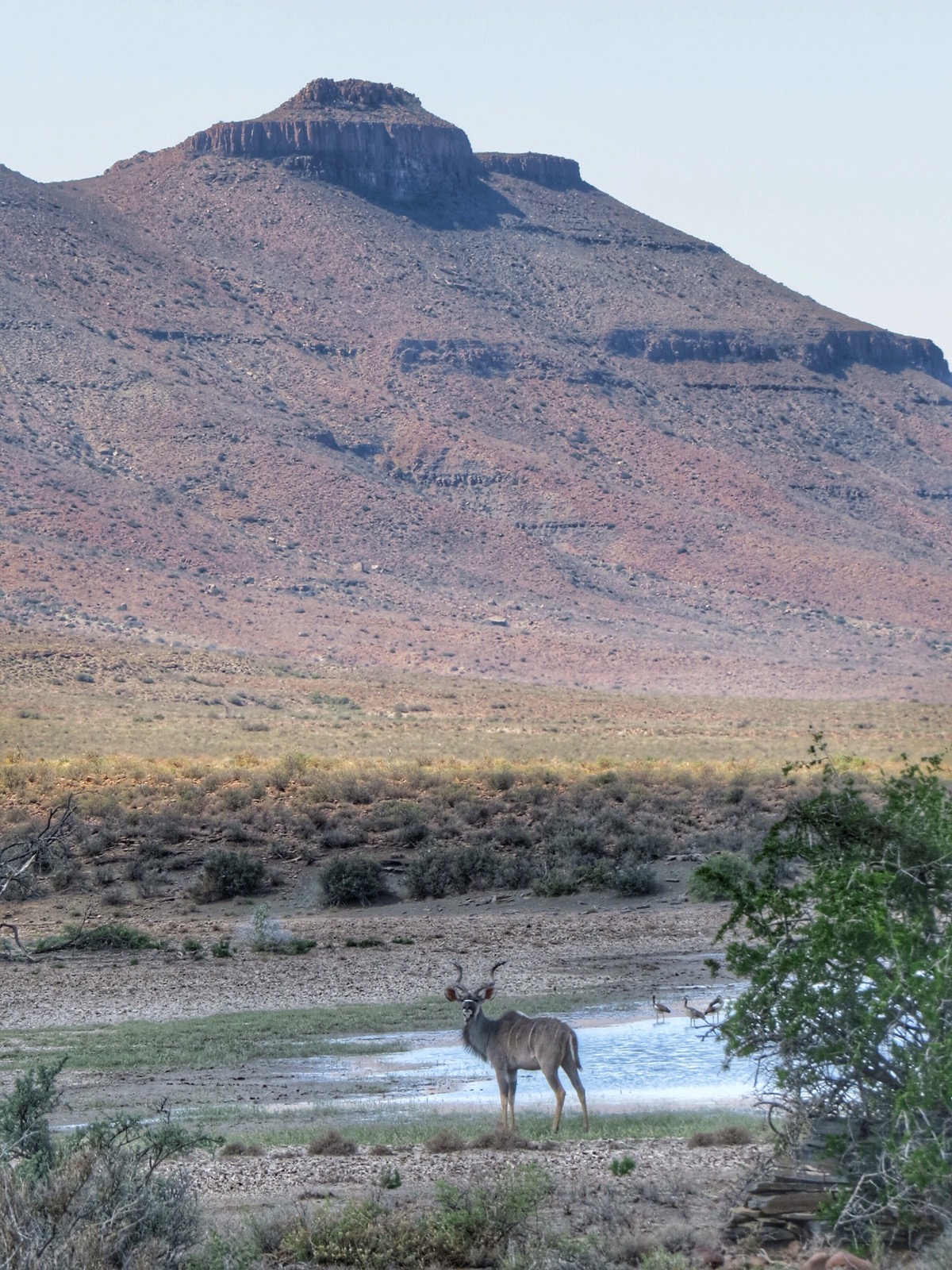
…but with so little water and such sparse vegetation, there’s even very little bird life.
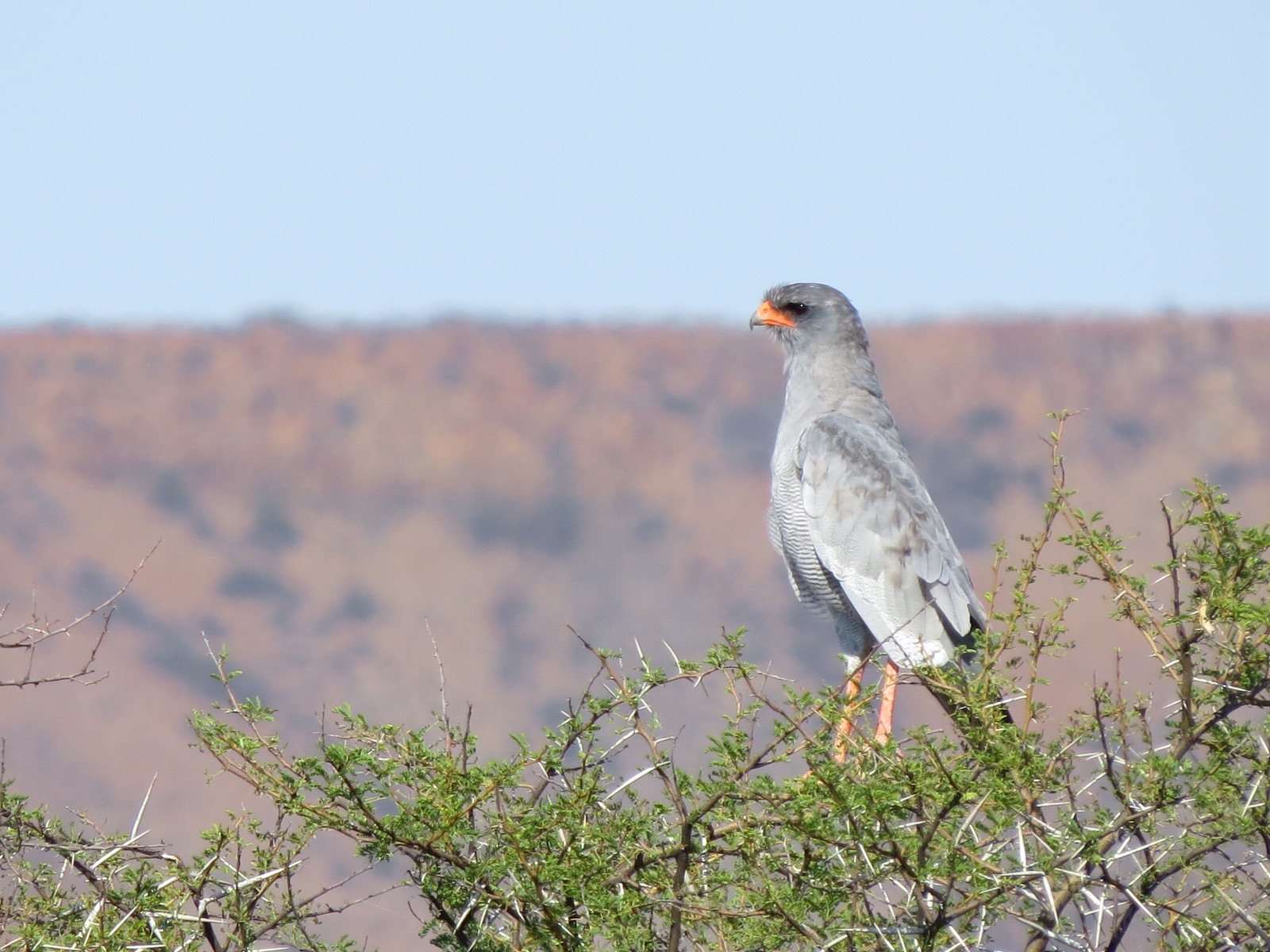
What Karoo is about is the massive, empty landscape…
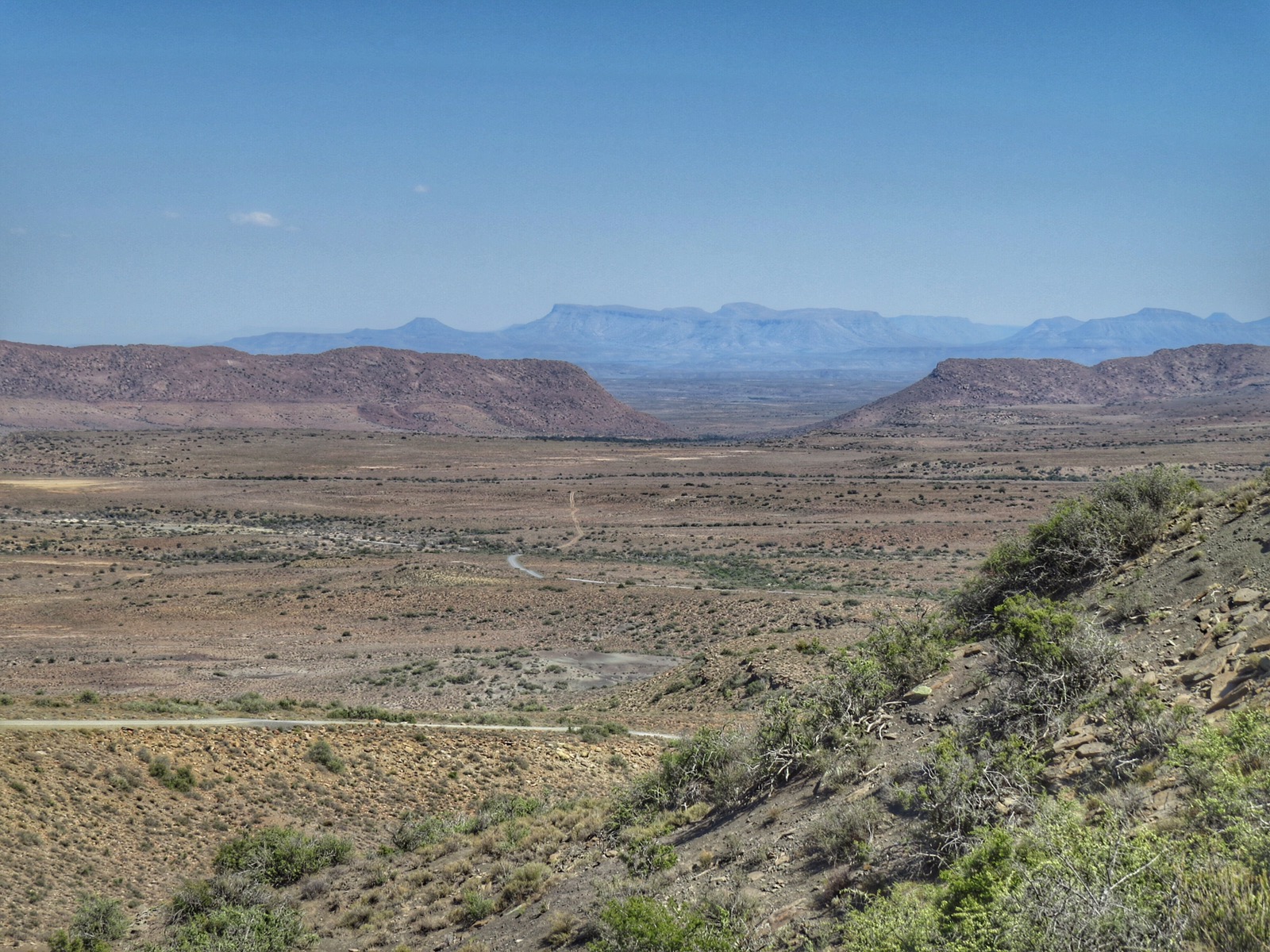
…the ever-changing colours of the escarpment and plains…
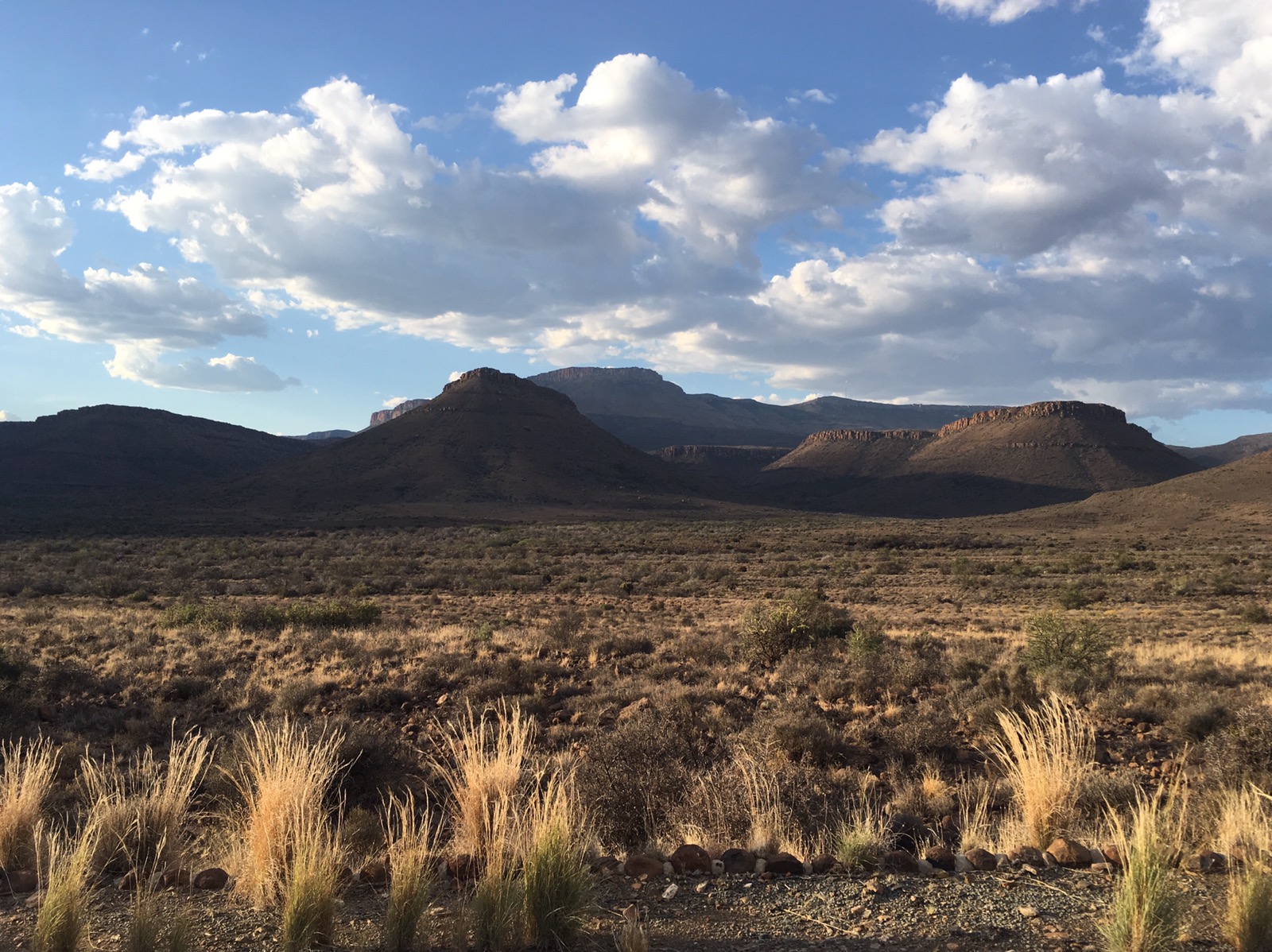
…the surprisingly vivid colours of some of the plants…
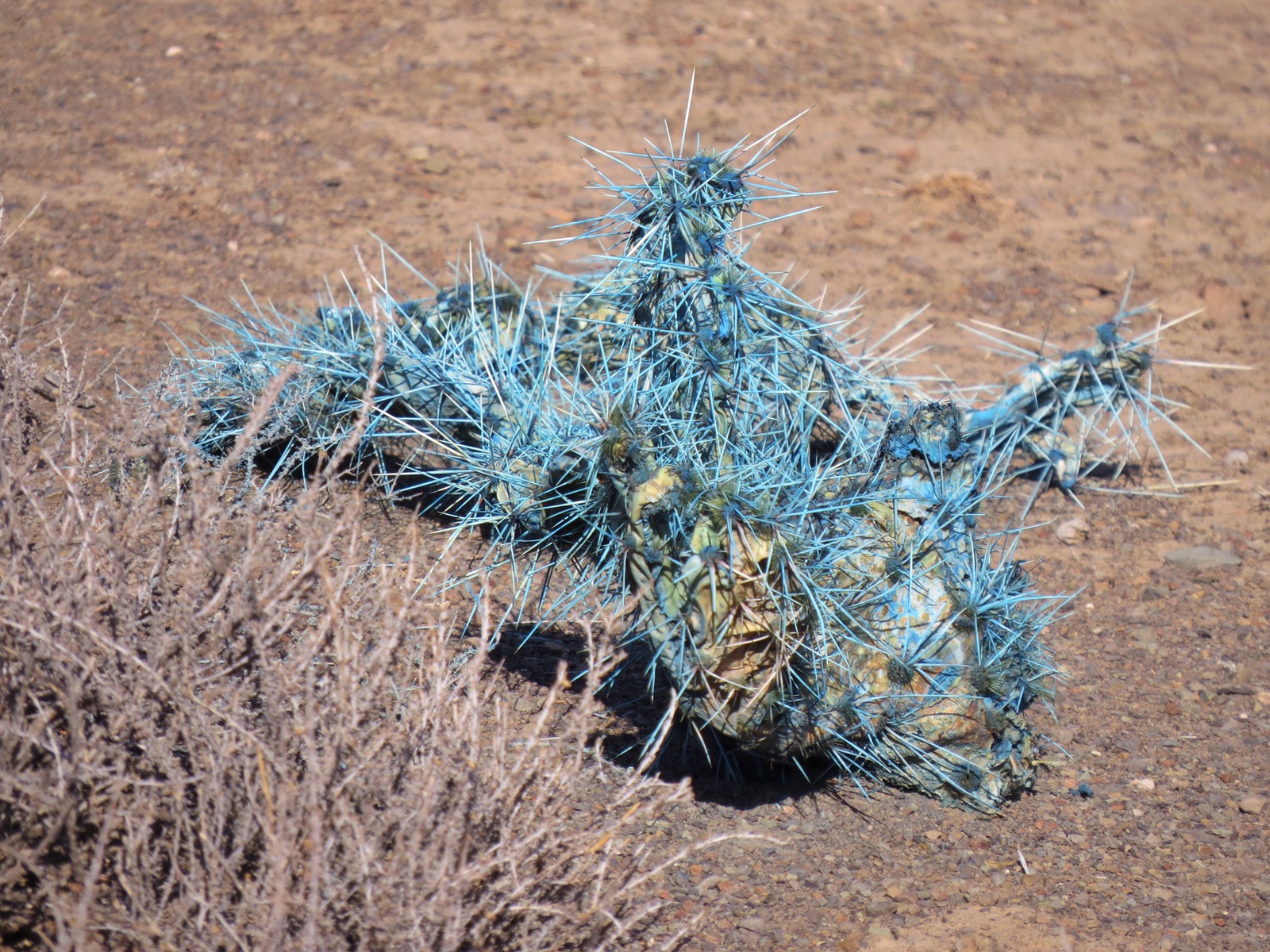
…and the multitude of mobile doorstops that roam our camp.
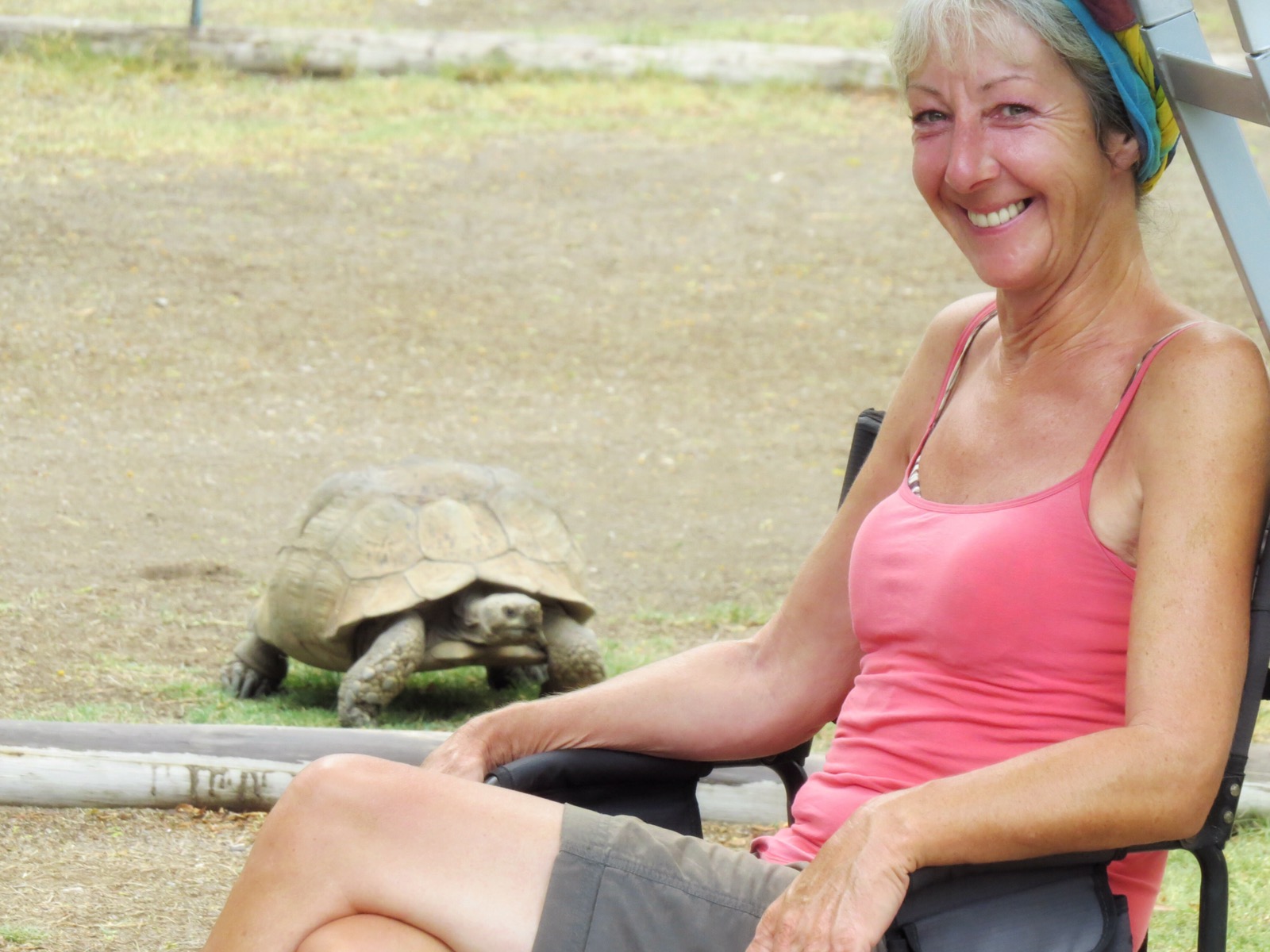
We set out from Karoo to cross the plains and escarpments of Groot Swartburg with its strange undulating folds of granite mountains that were moulded when this area was all sea bed…
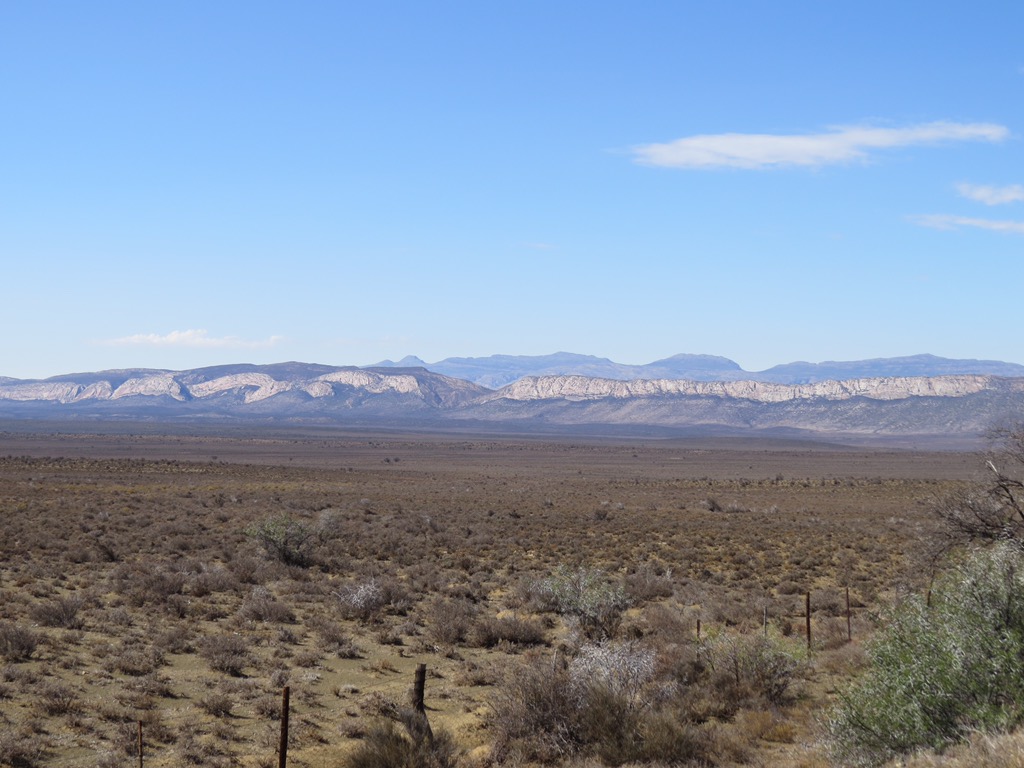
…and traversed the very scenic R62 route west to Calitzdorp where we camped for a couple of days at the old station on the outskirts of town.
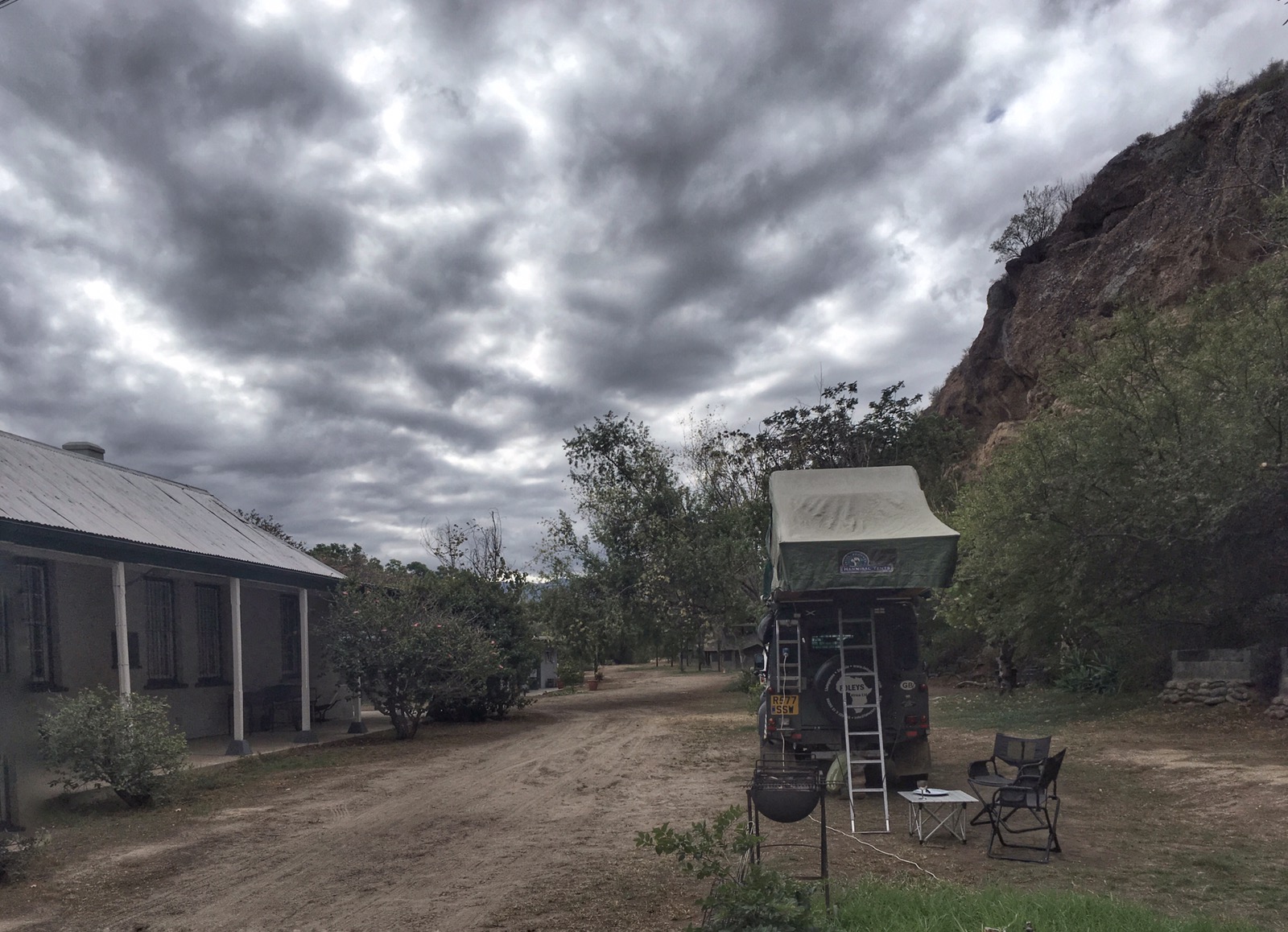
The station has been converted into a small campsite and backpackers and is being restored by the owners who took it on 4-5 years ago.
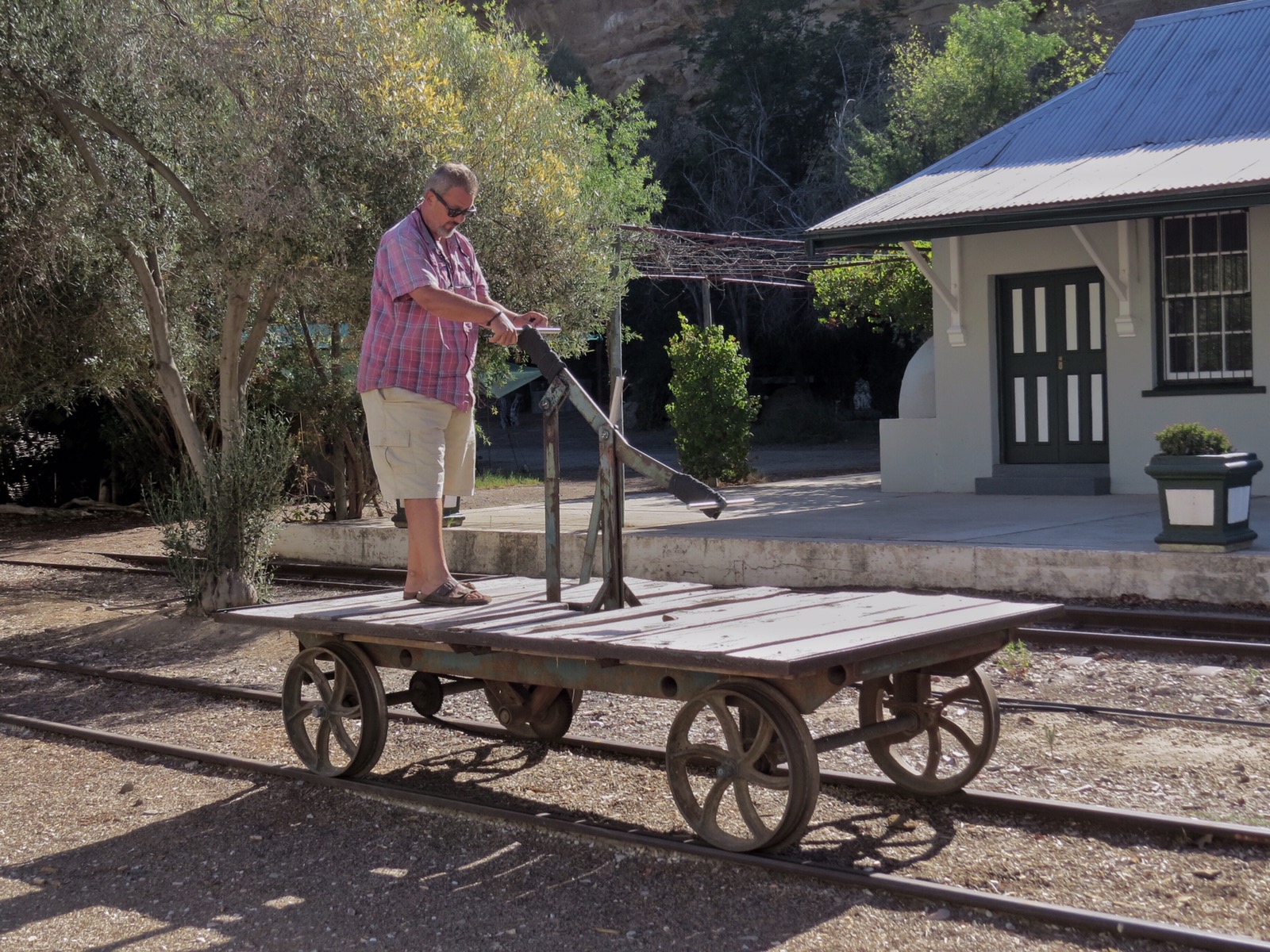
In Europe we’re so used to castles, churches and even homes being 300, 400, even 500 years old that we take for granted our history. Much of southern Africa has only been settled for a matter of 120-150 years and therefore any building a century old almost automatically becomes an historic monument.
We continued along the R62 through the beautiful valley of Ladismith…
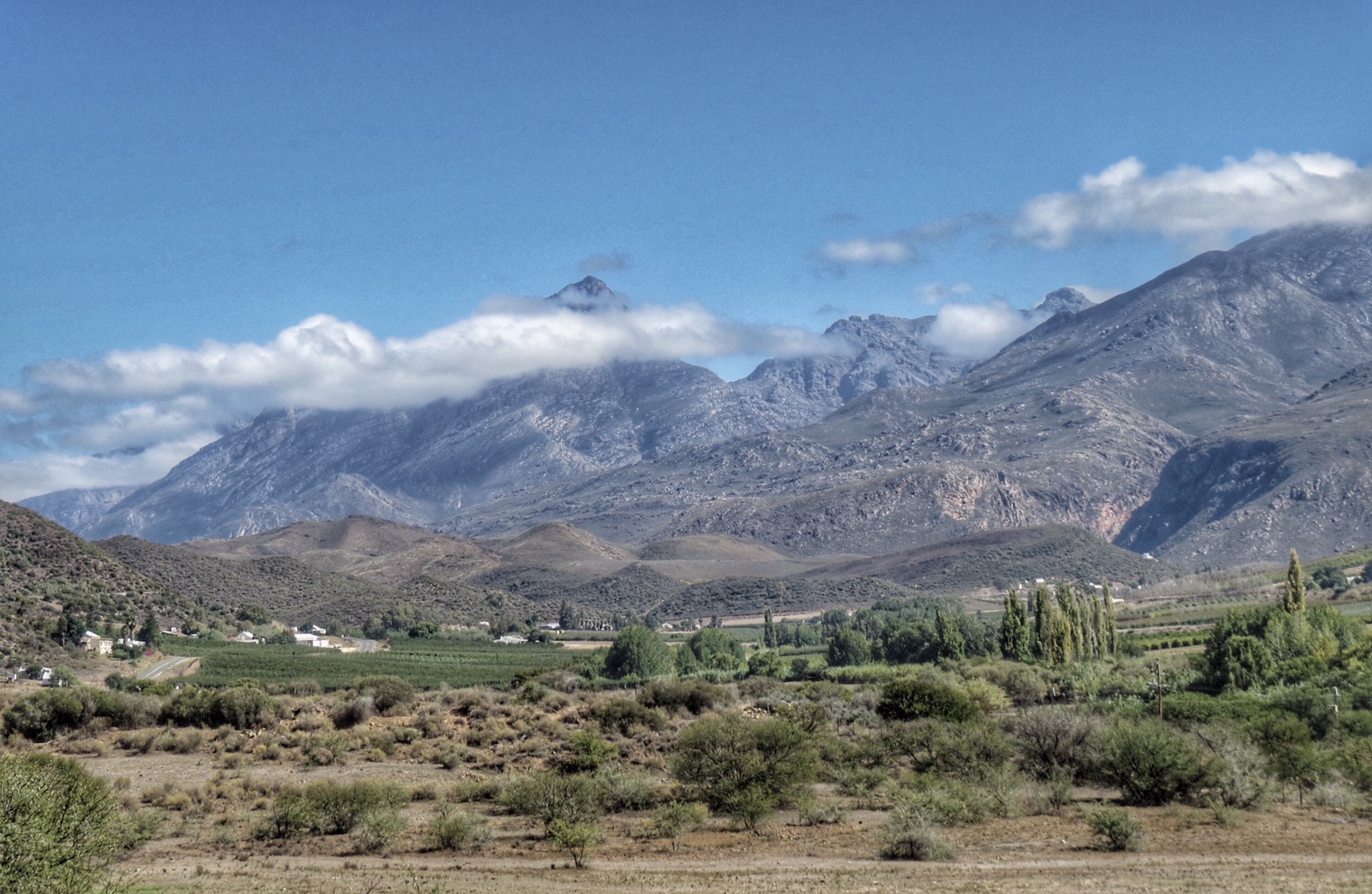
…and joined the Garden Route at Swellendam, crossing the huge sweeping plains of parched, dusty farmland around Hermanus and Caledon…
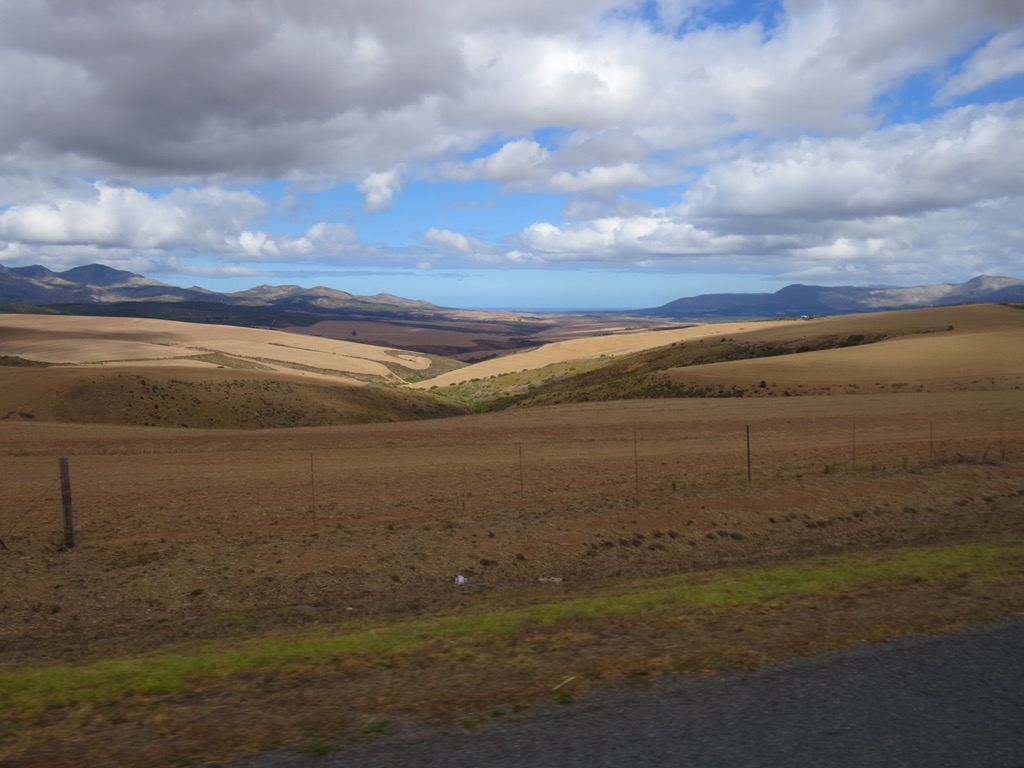
…before dropping down over the final Cape escarpment at Sir Lowry’s Pass and getting our first sighting of salt water for almost 3 years.
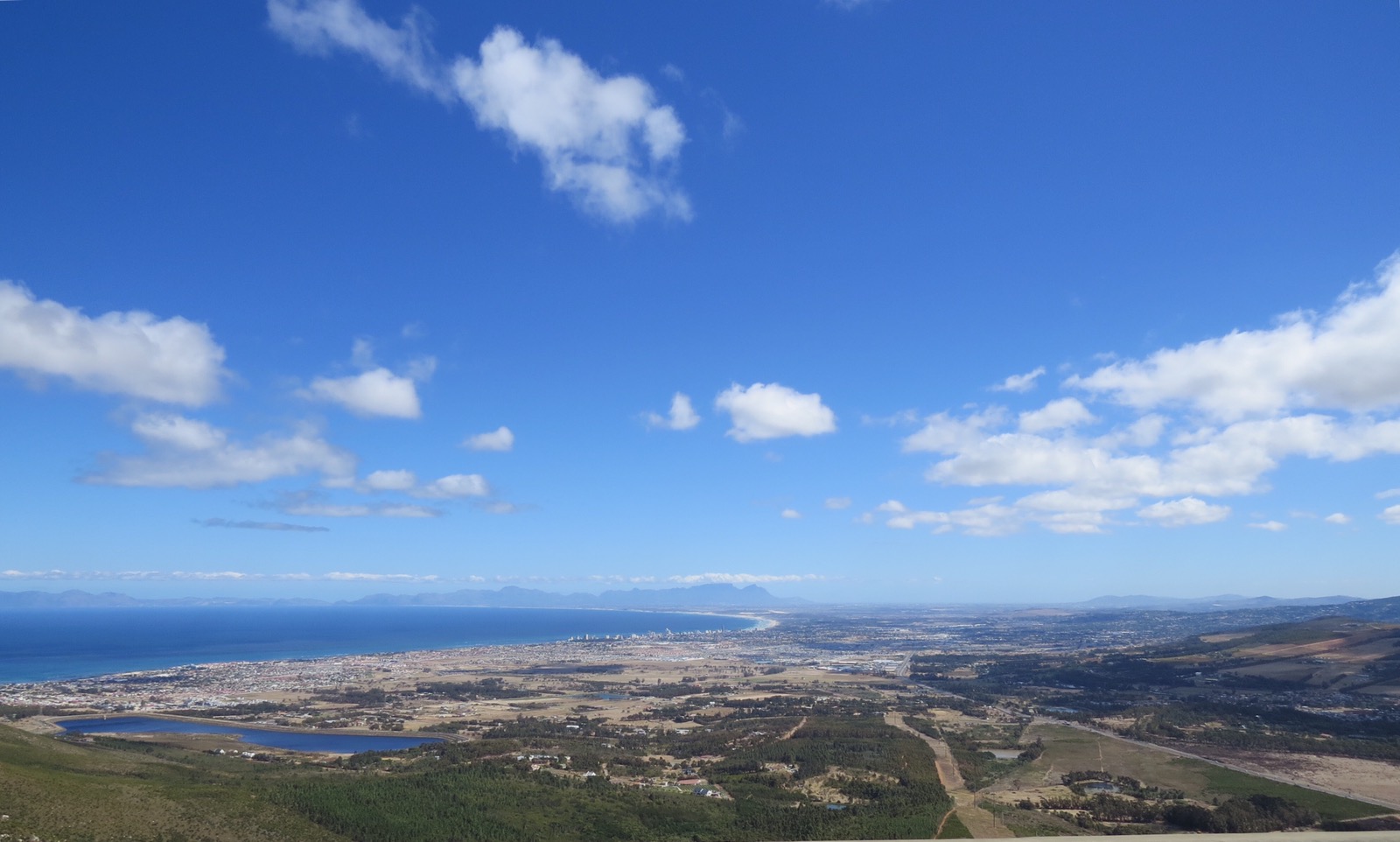
We pitched our ground tent next to the Berg River amongst the vineyards and mountains of Stellenbosch and settled in to wait for Judith’s flight to arrive in Cape Town the following day.
